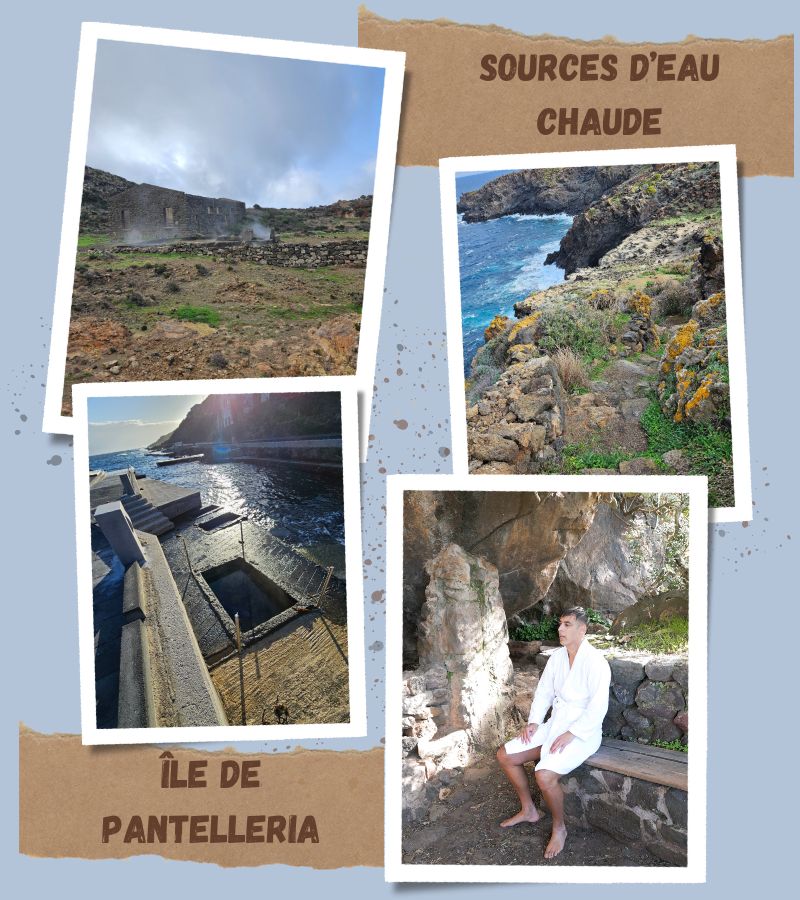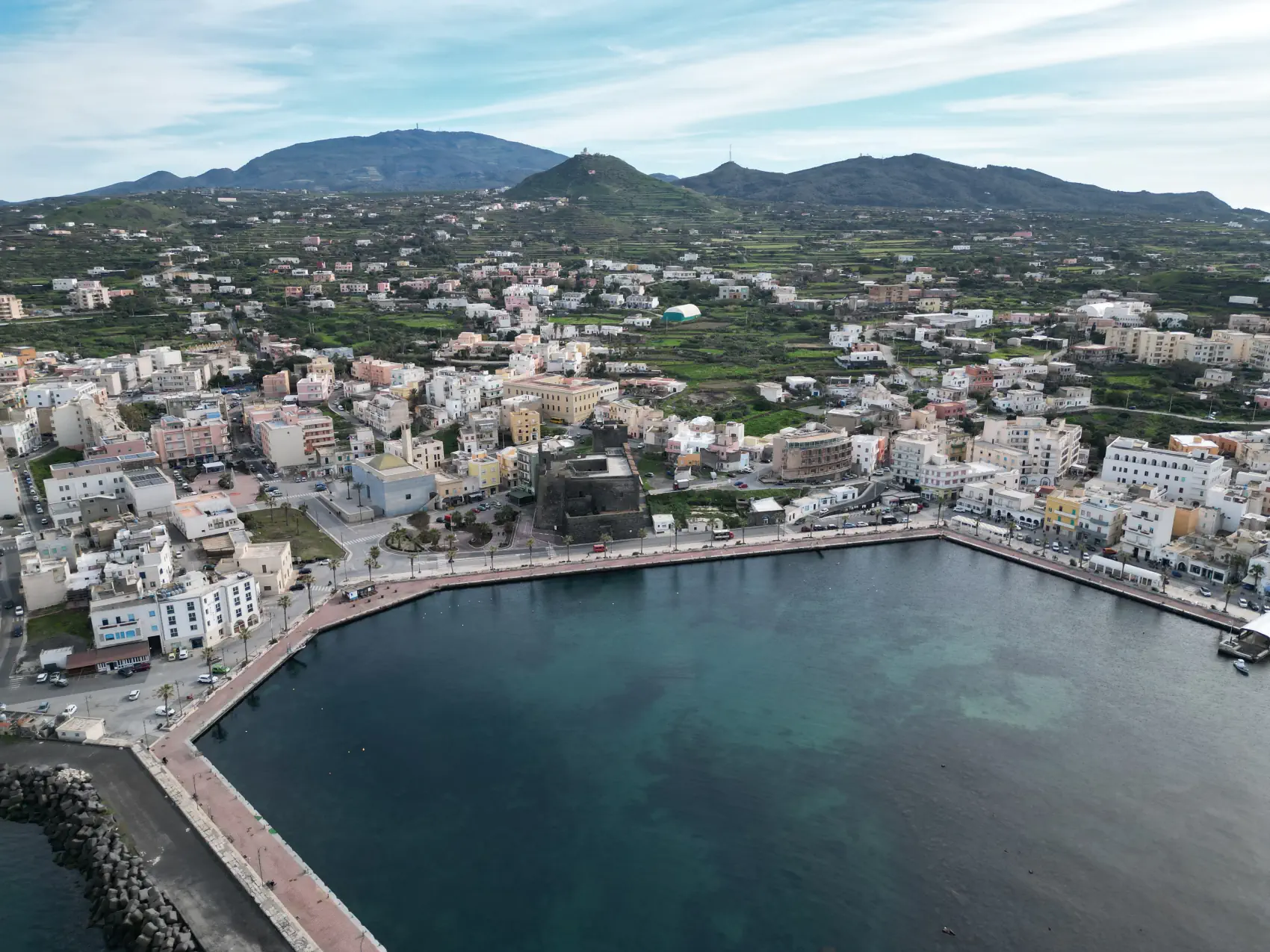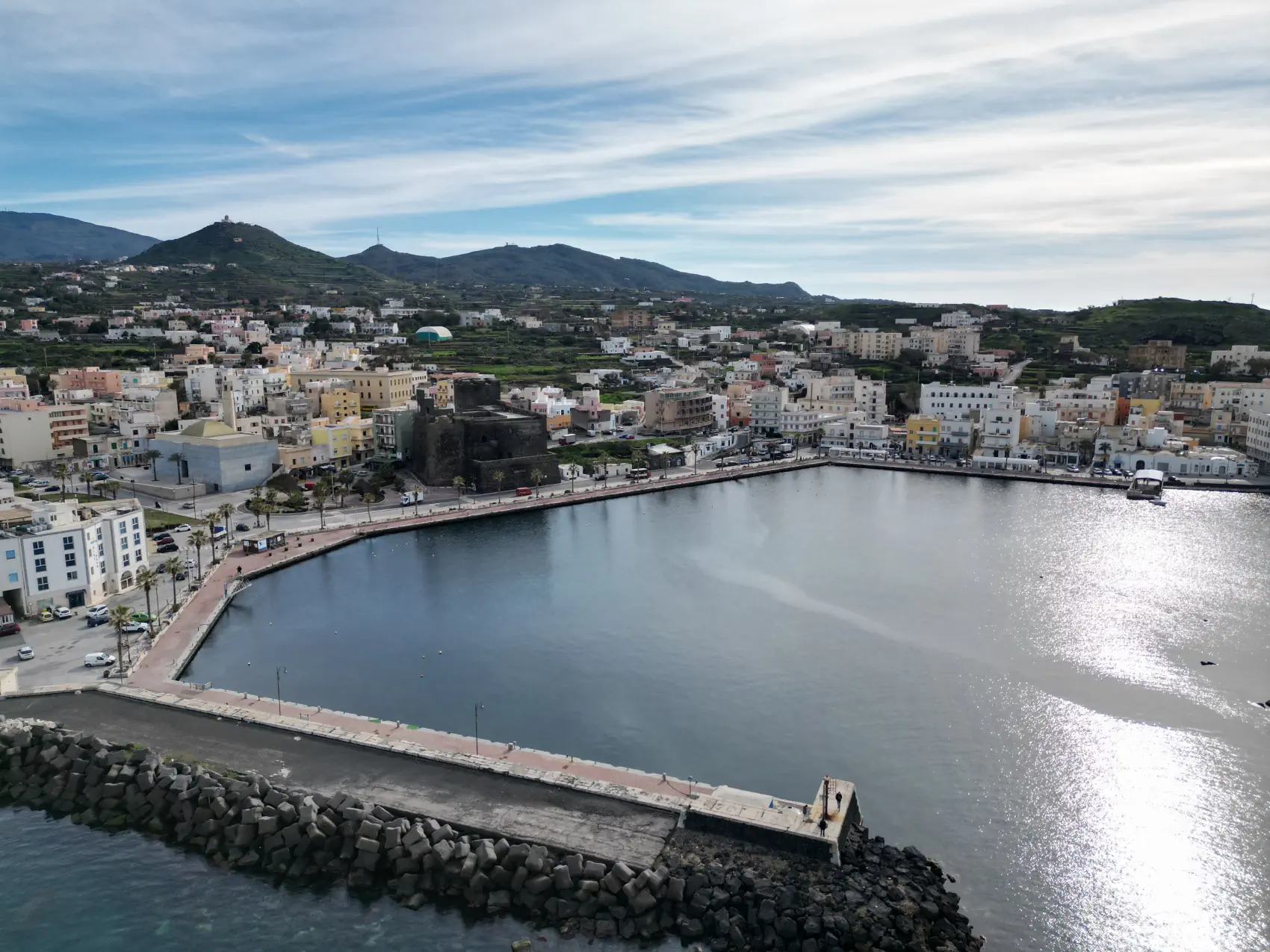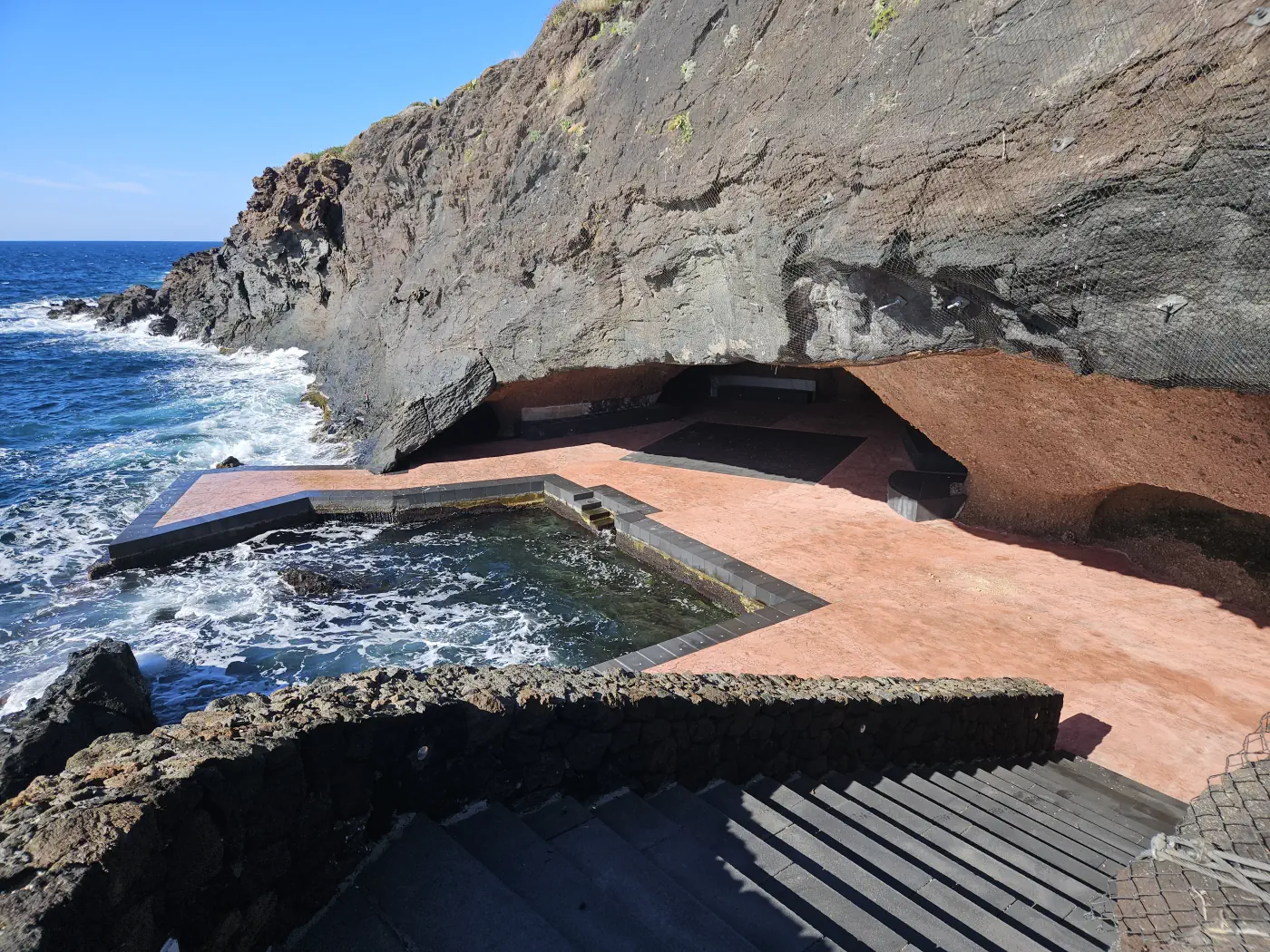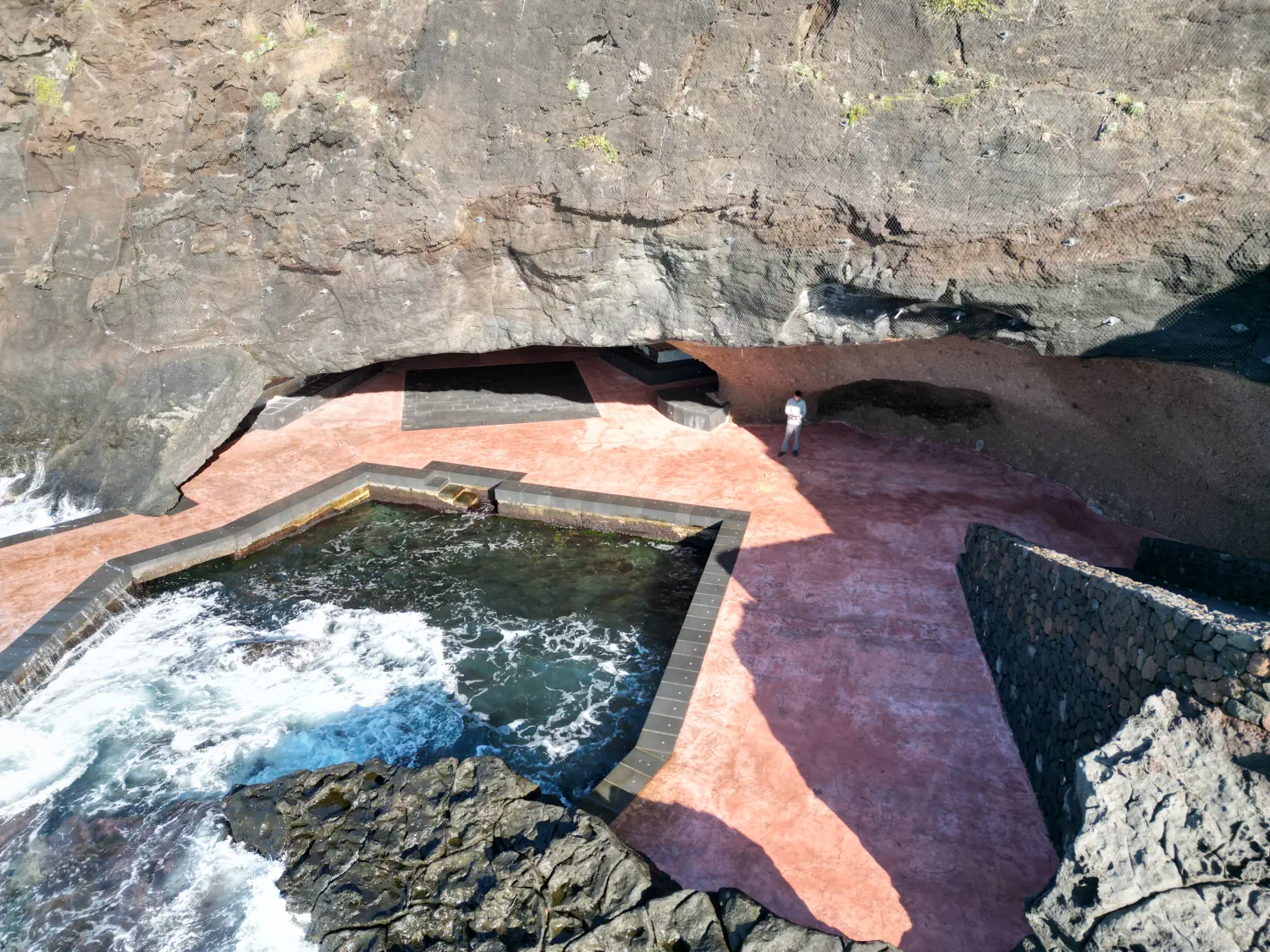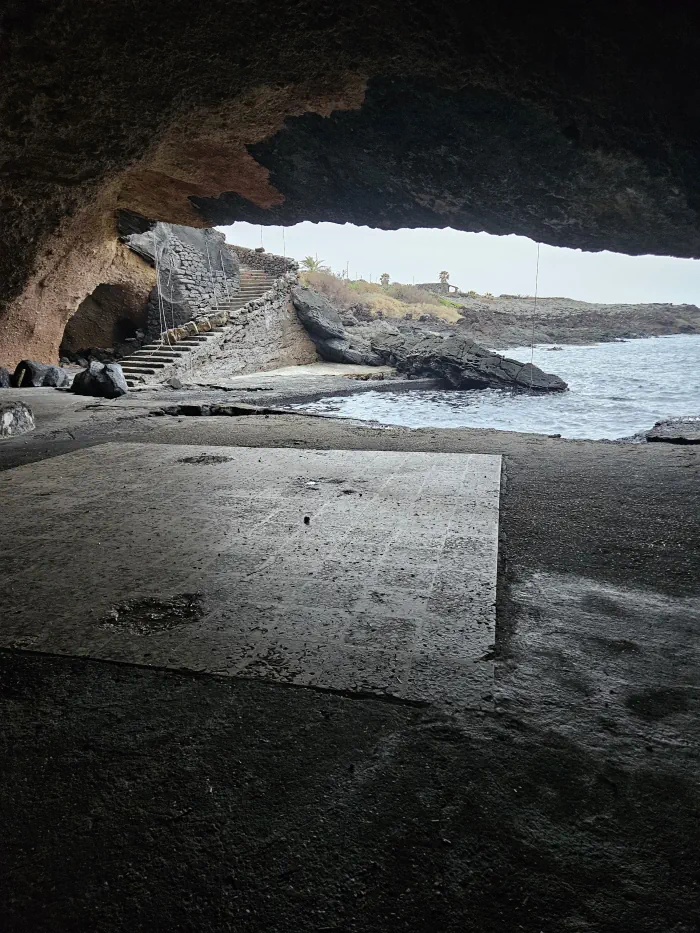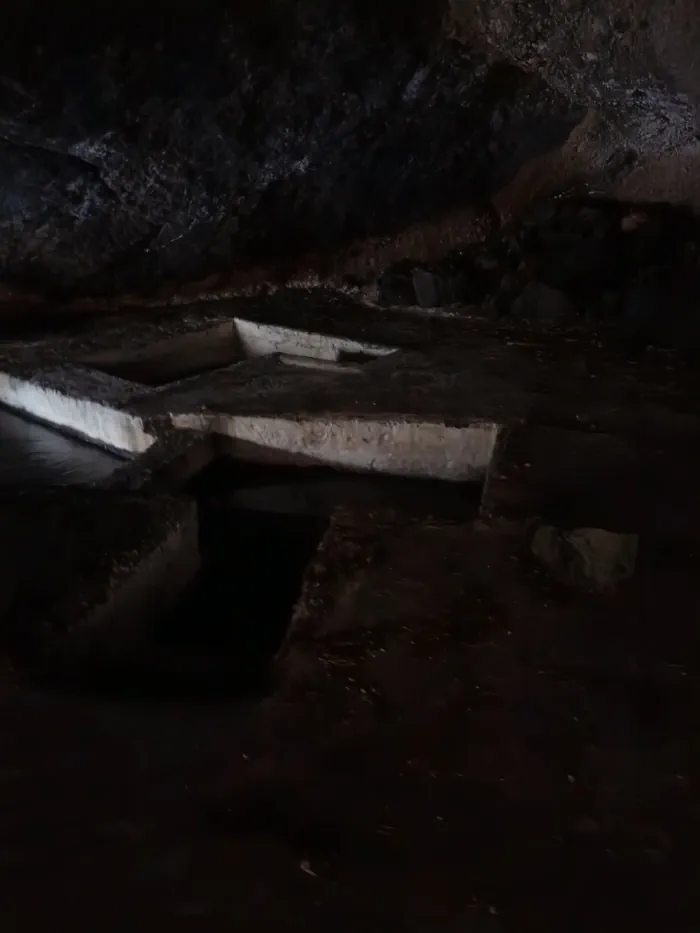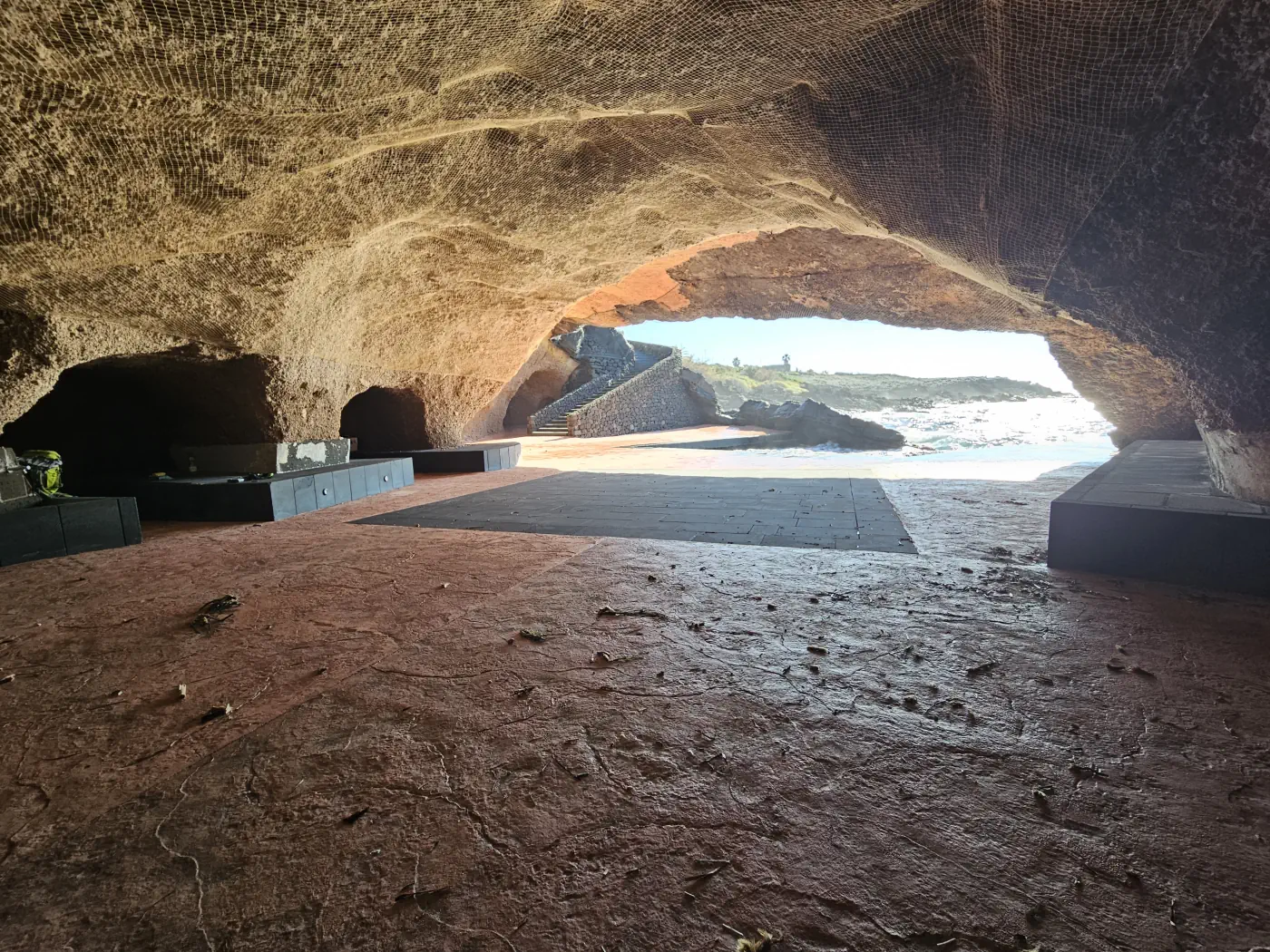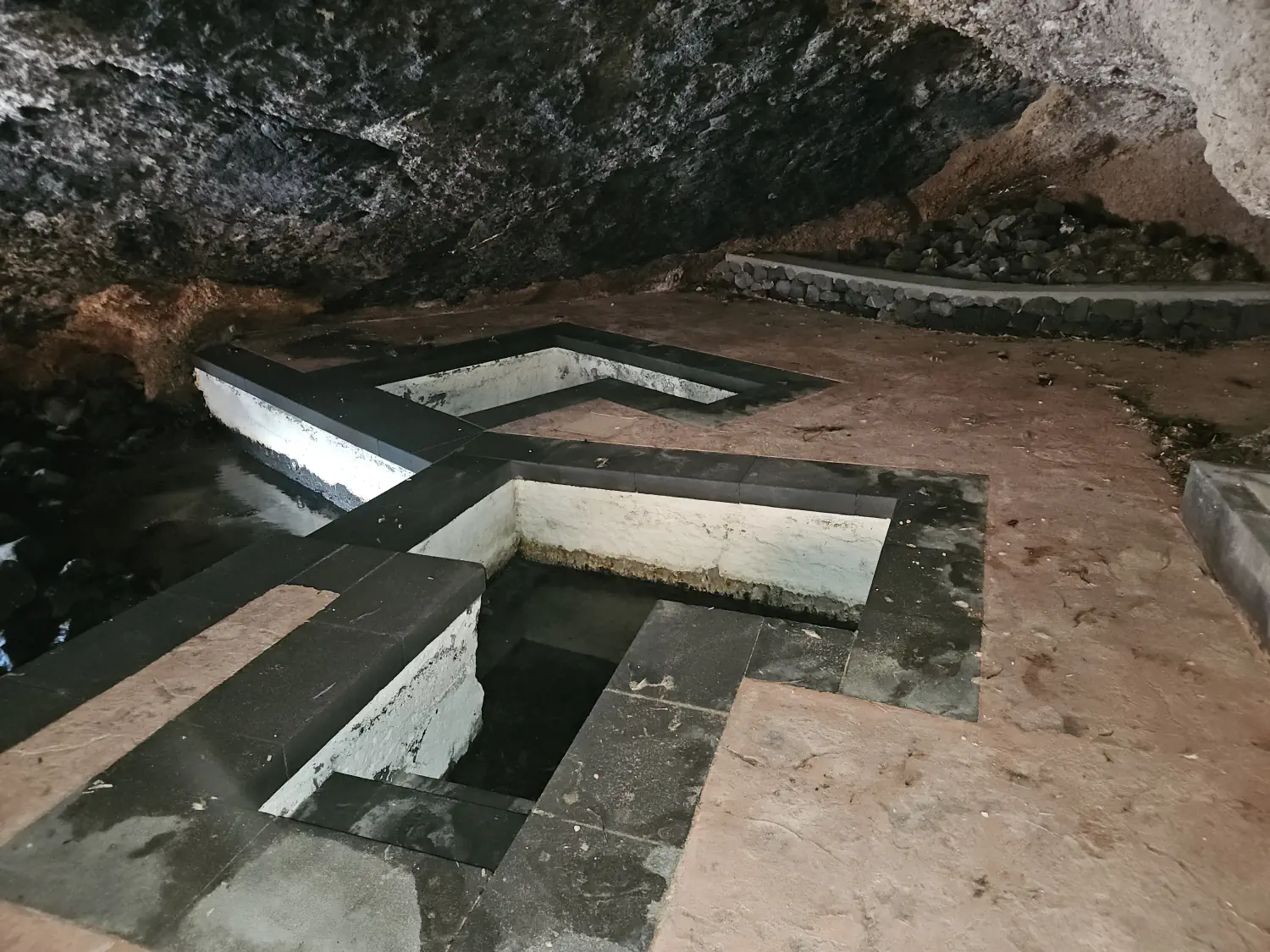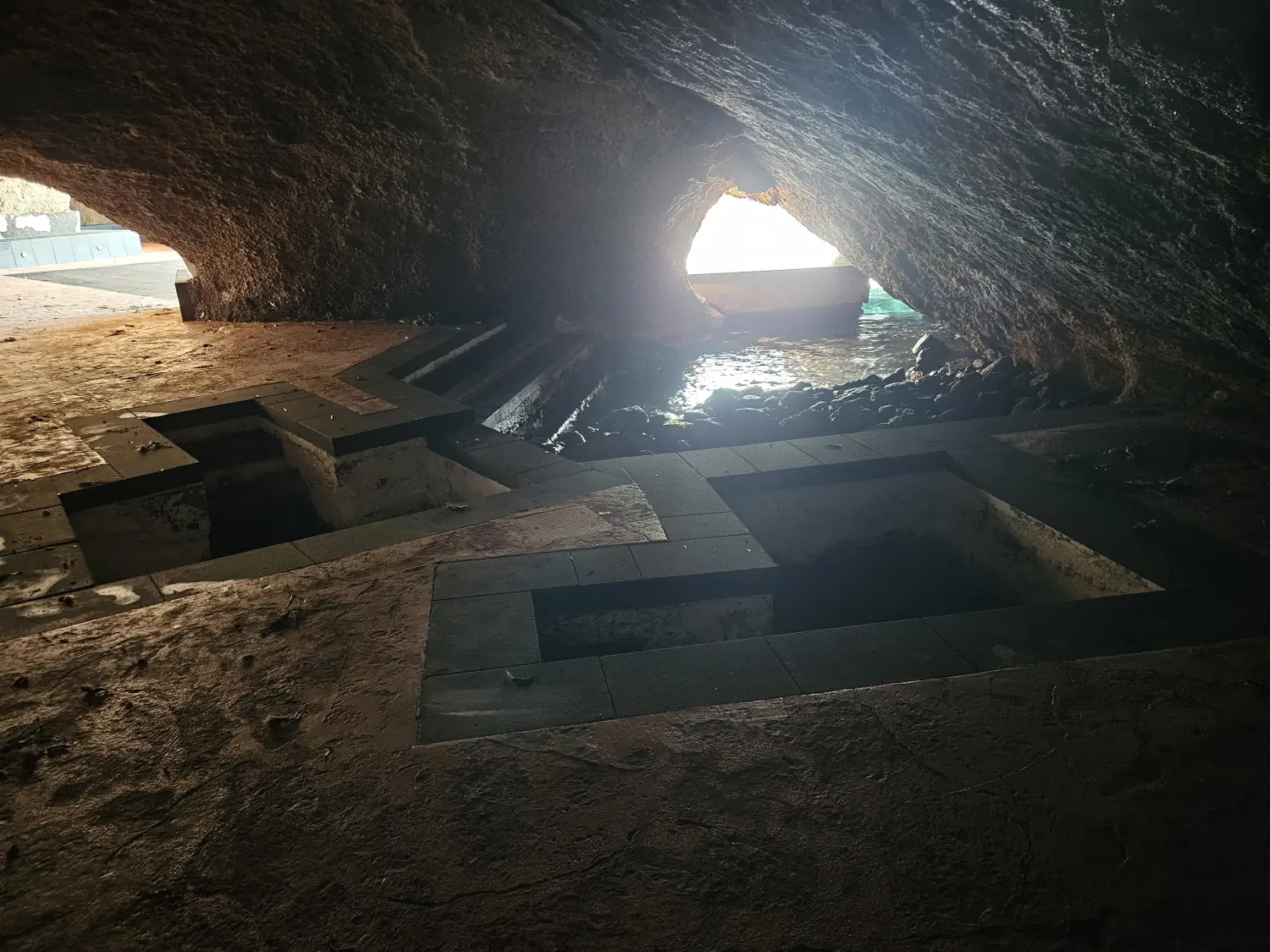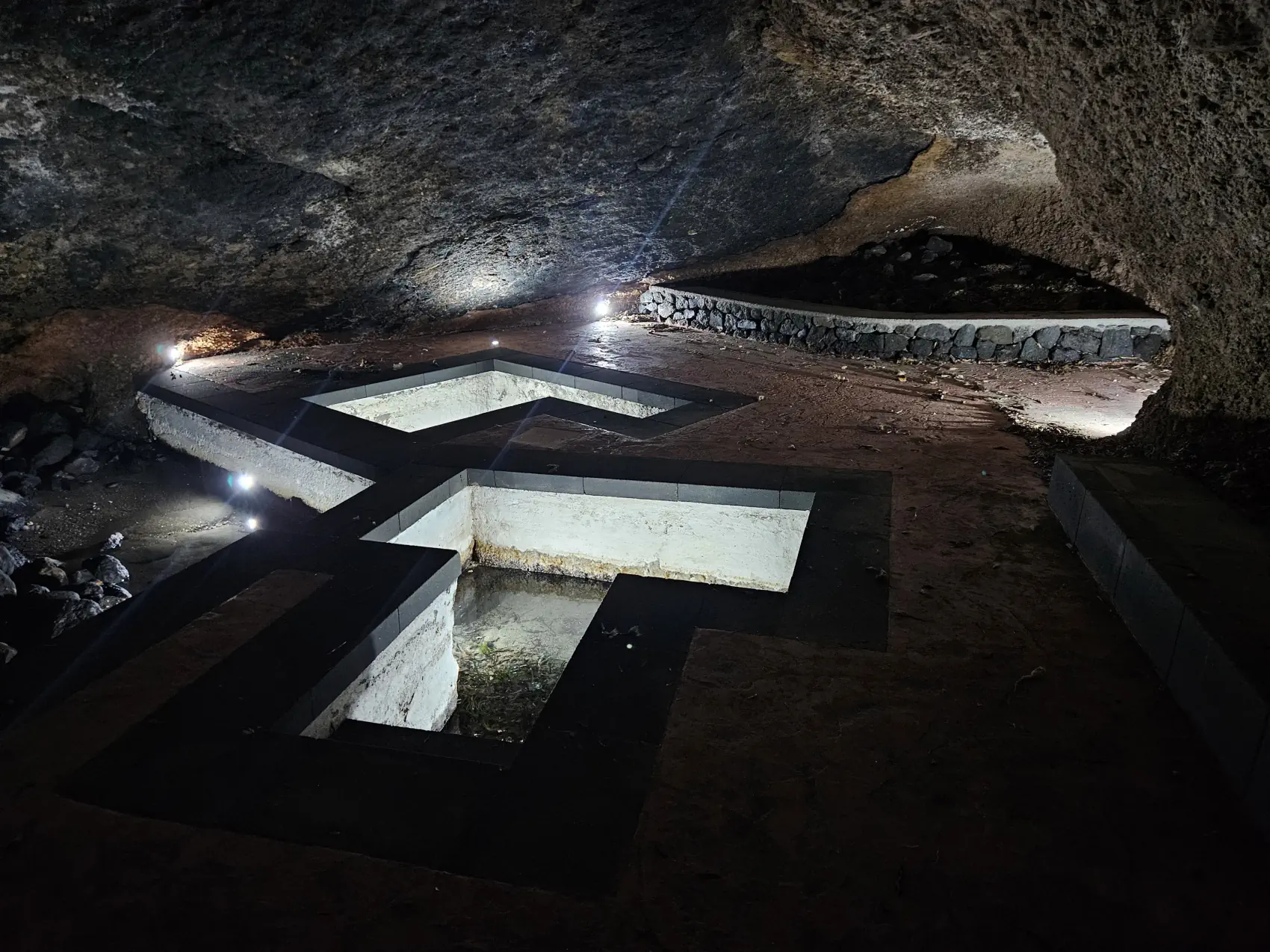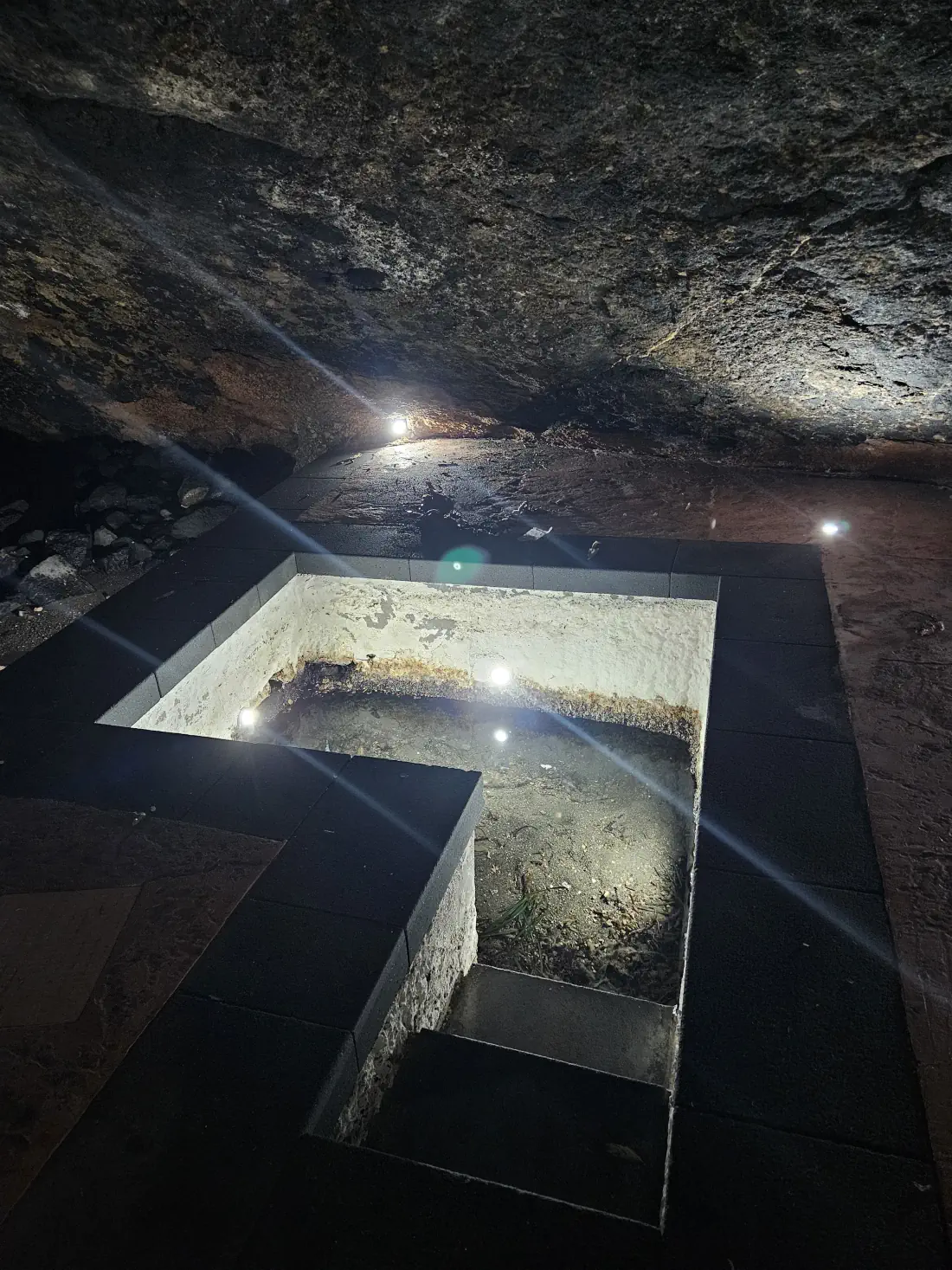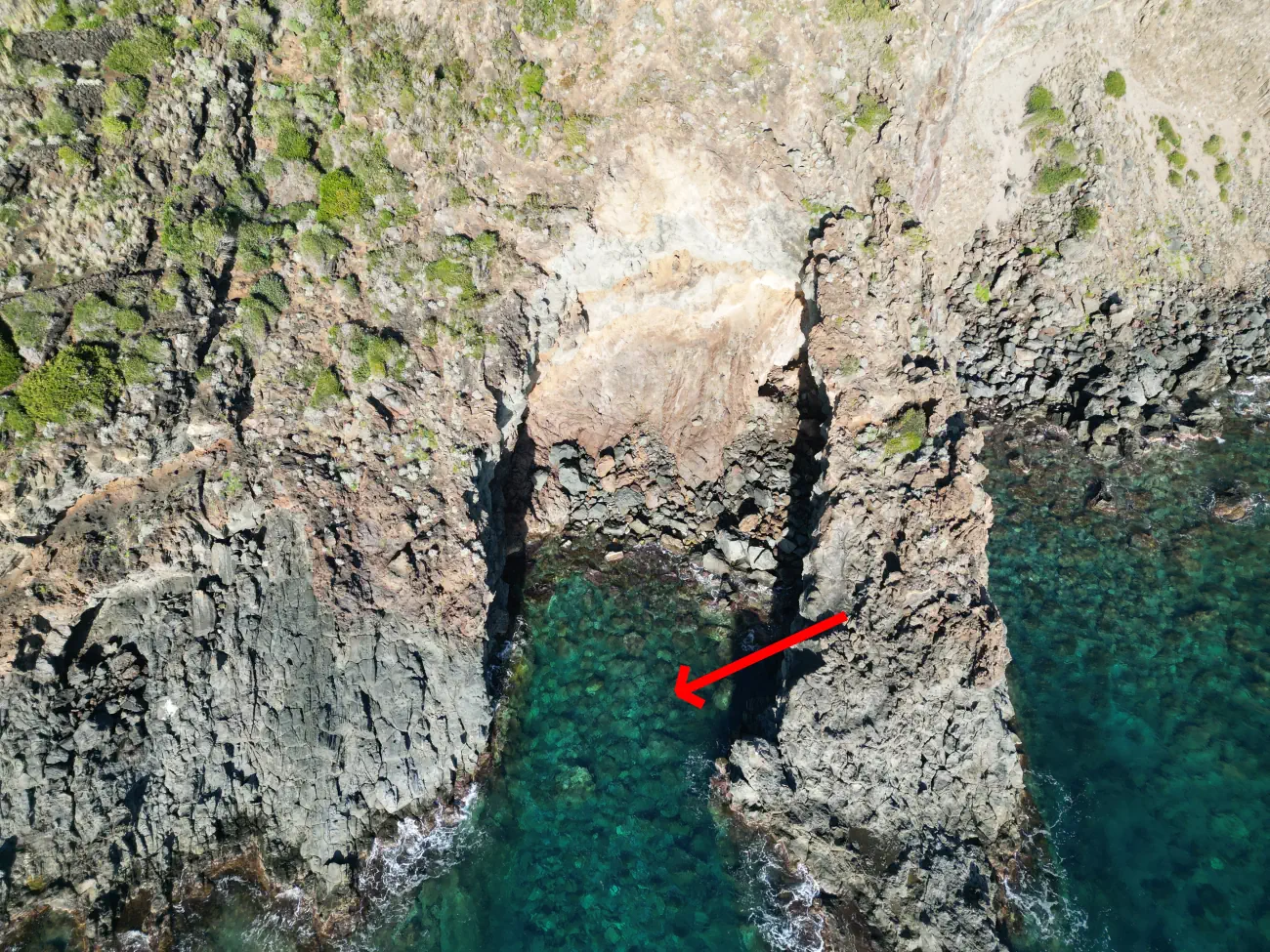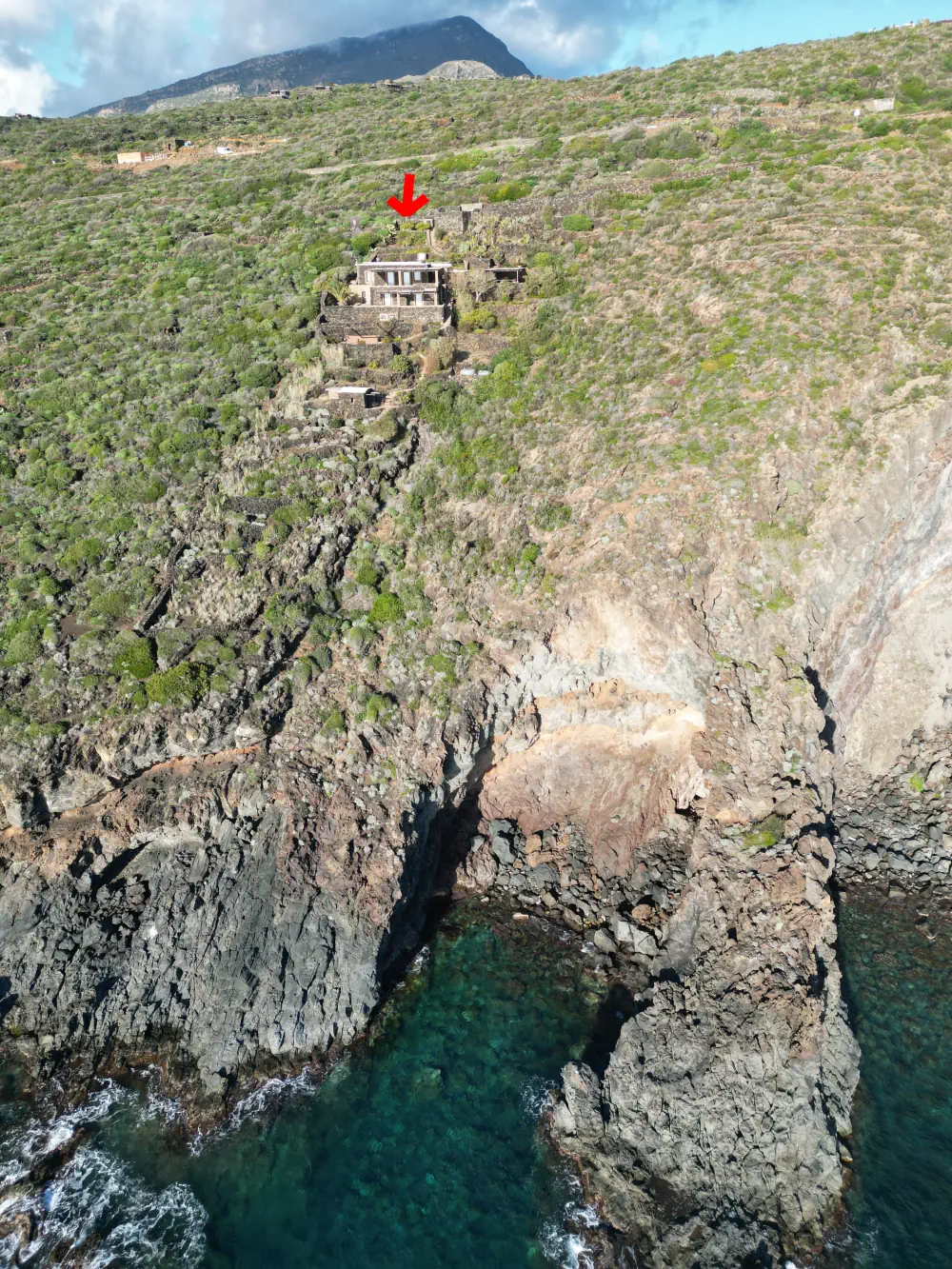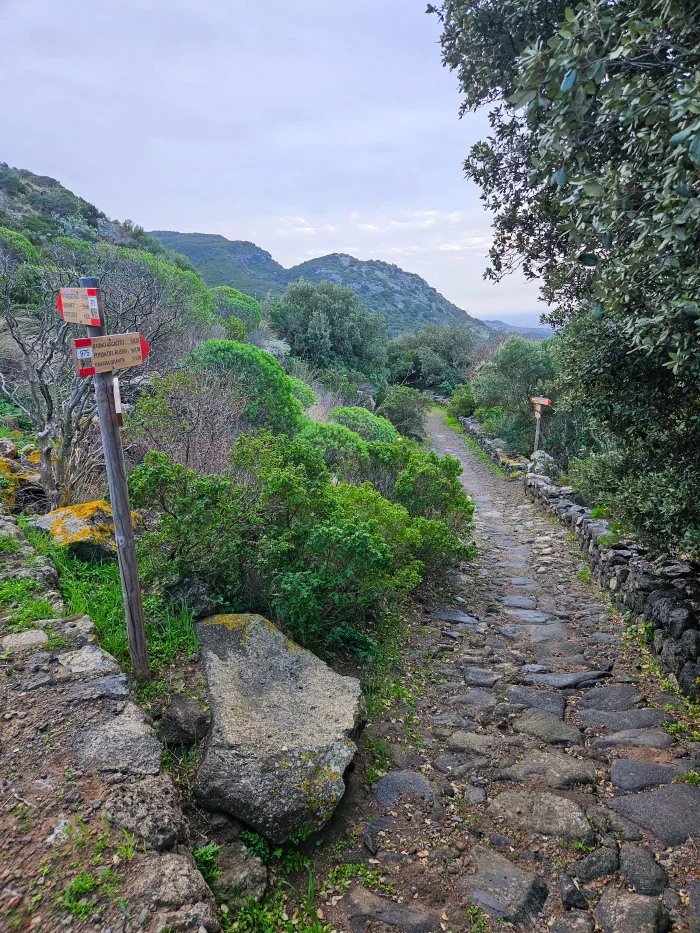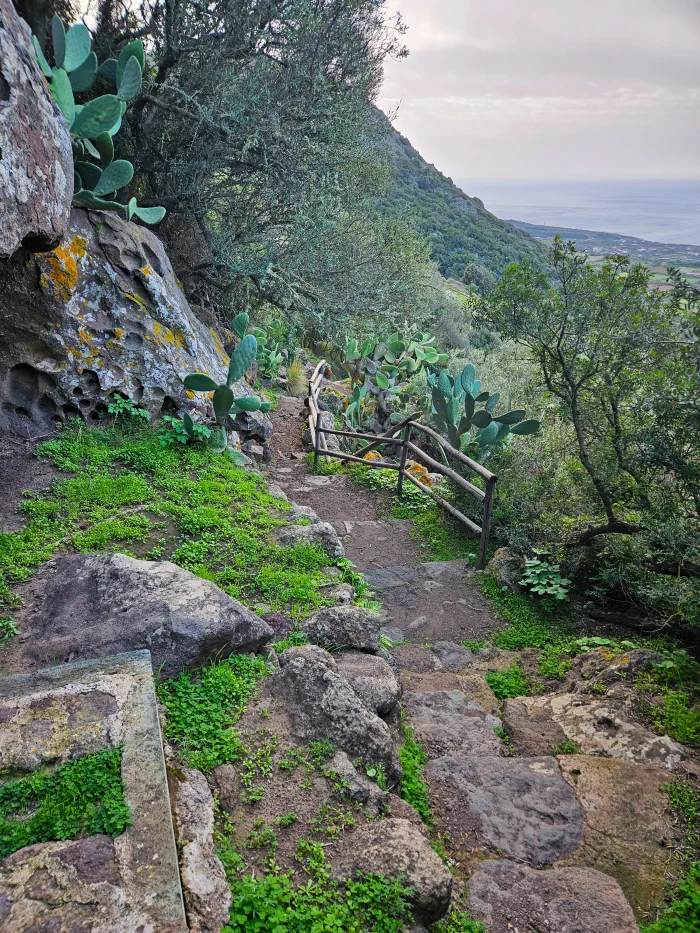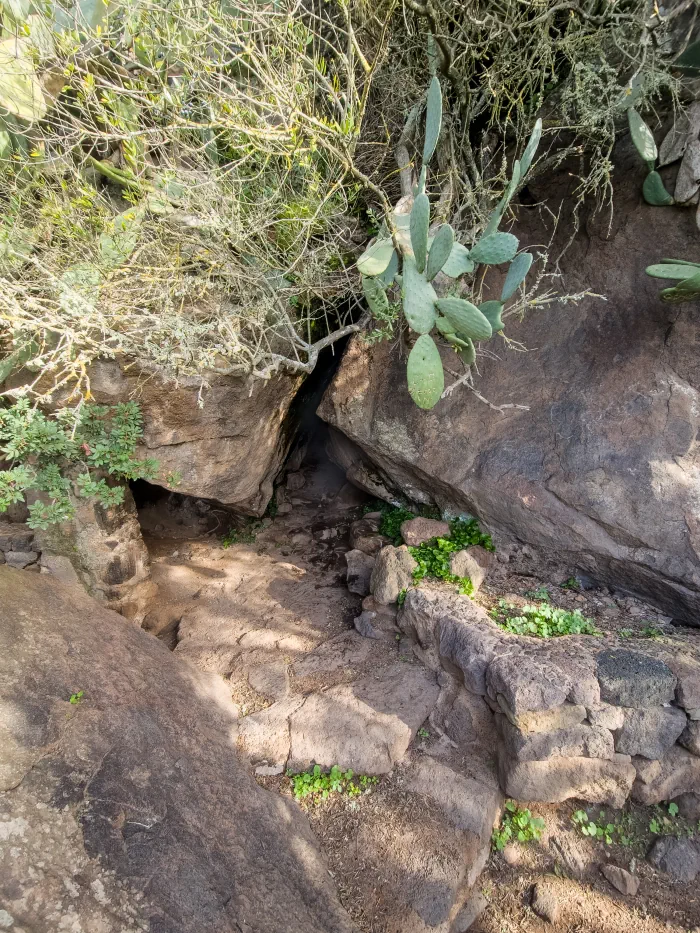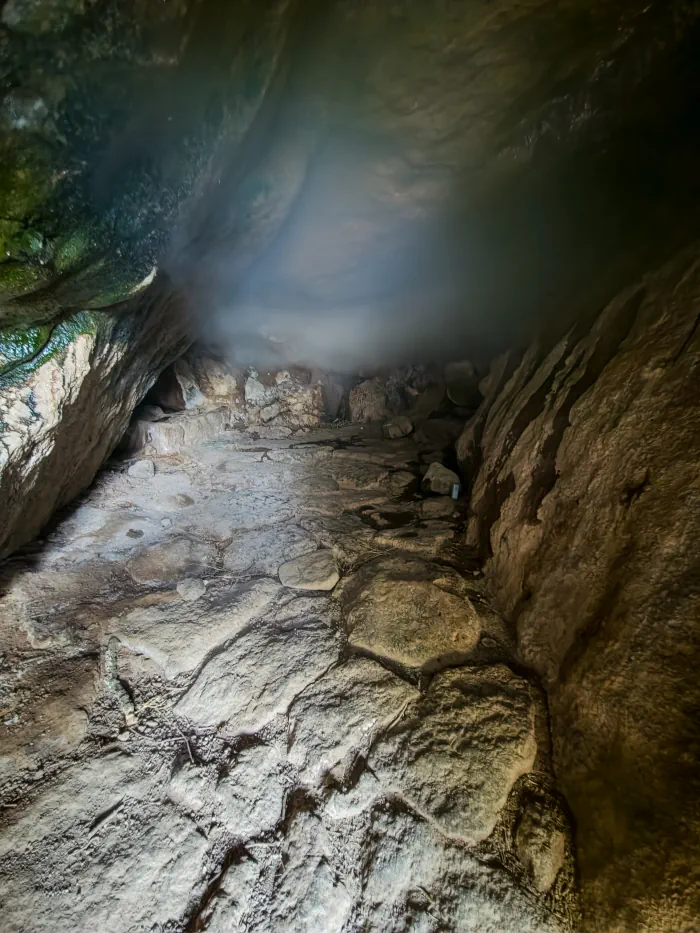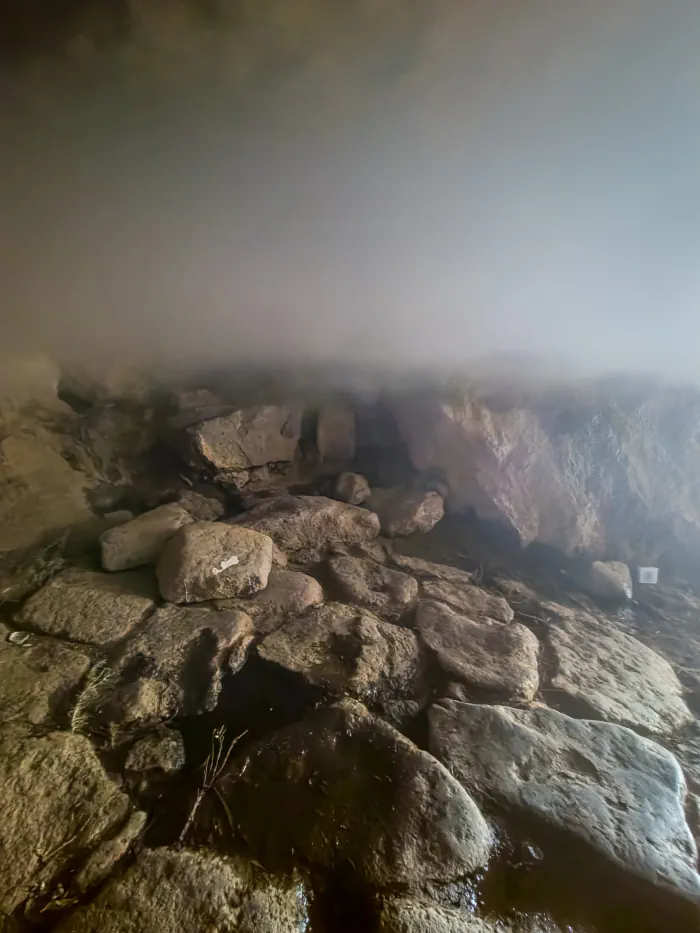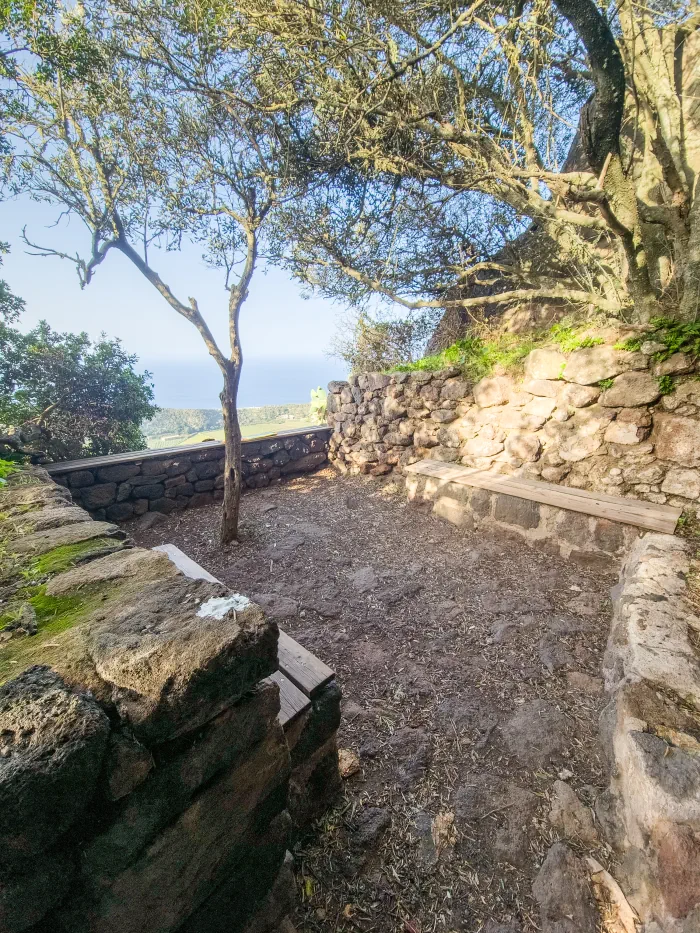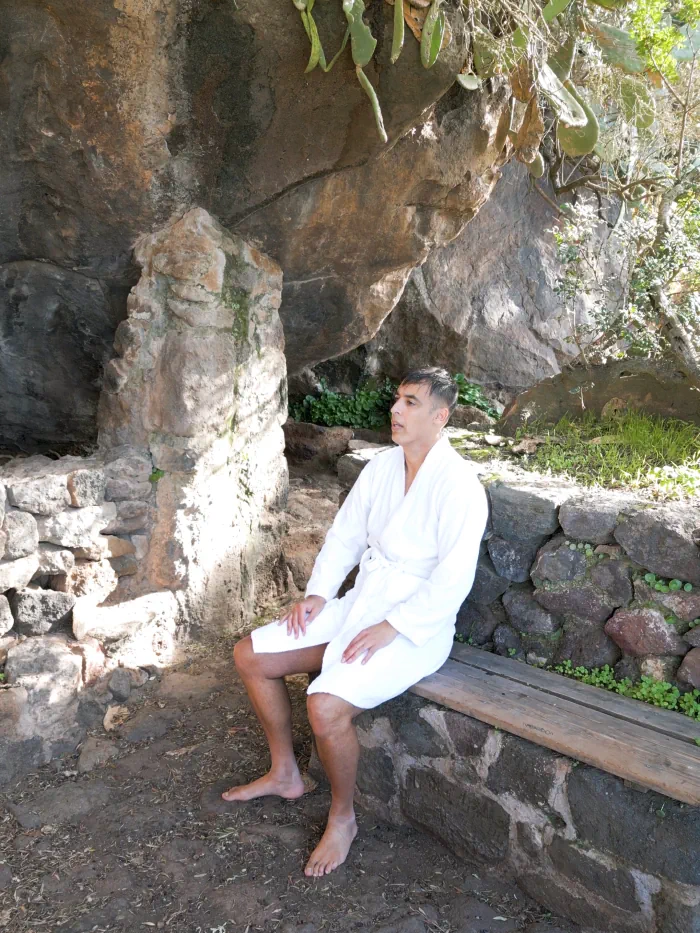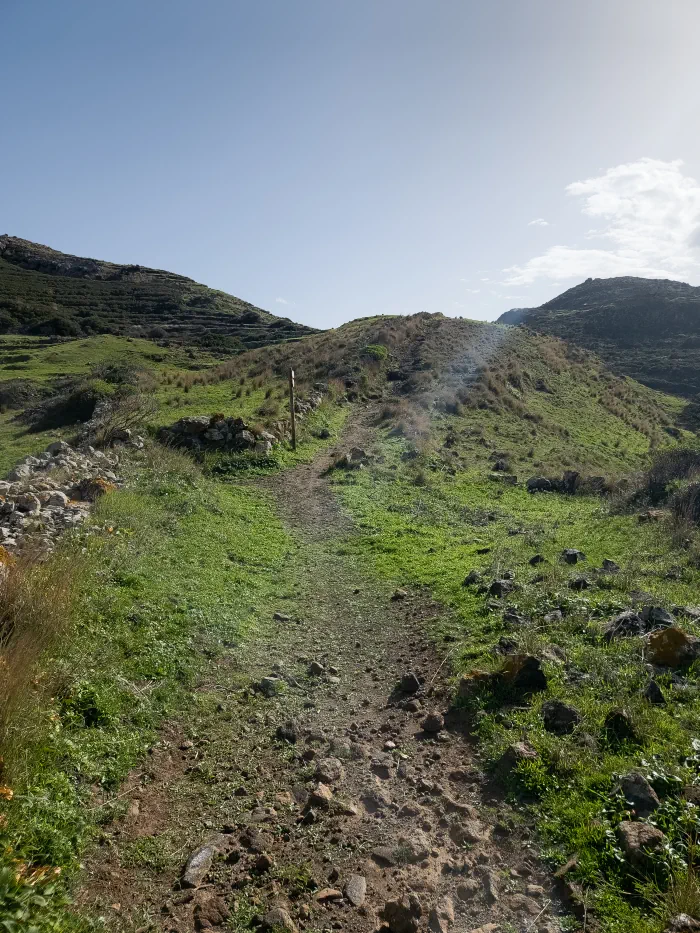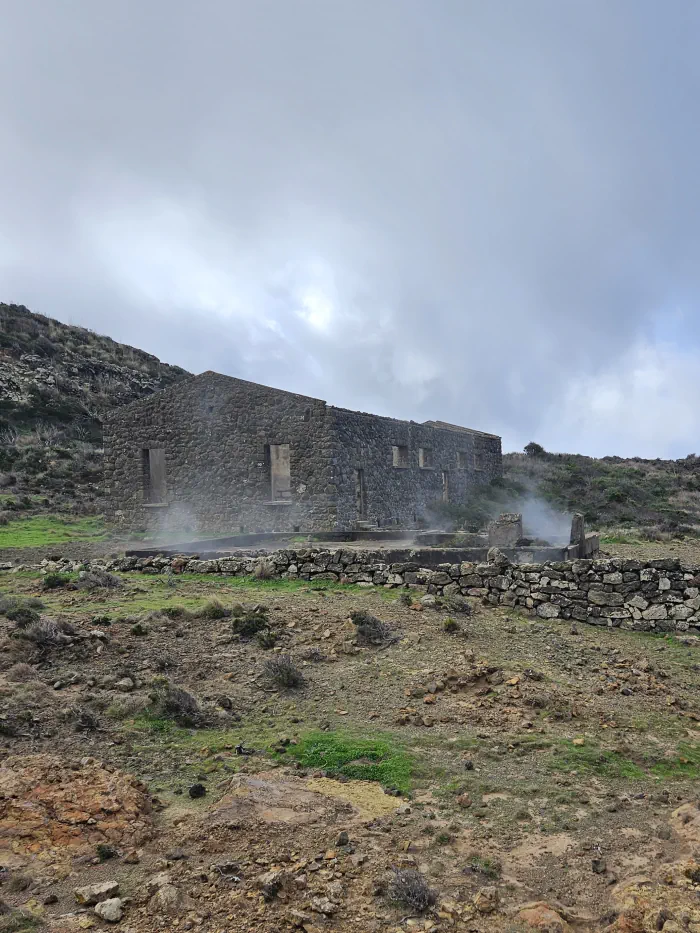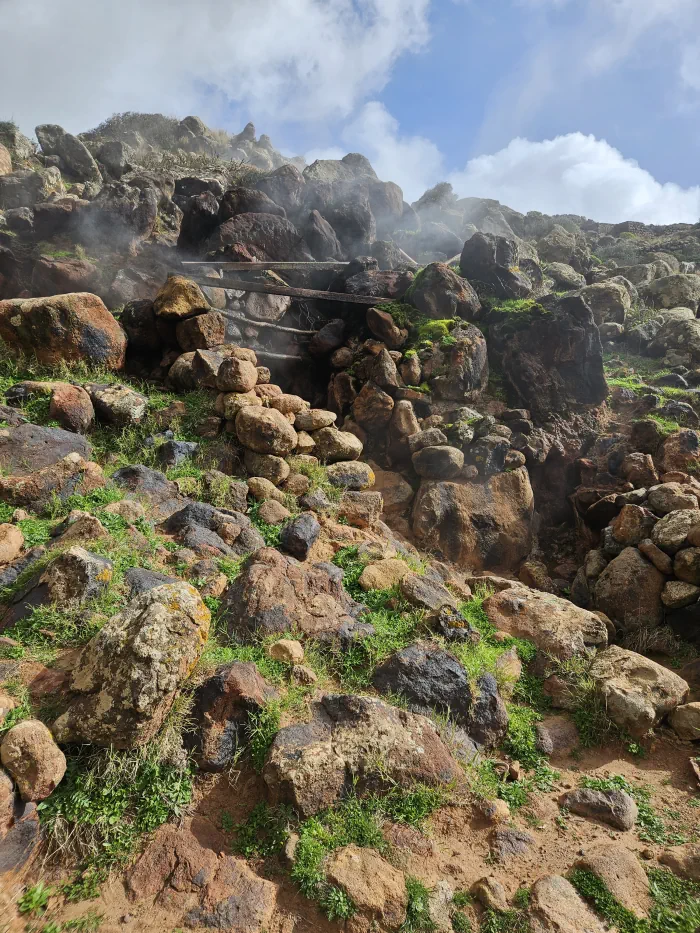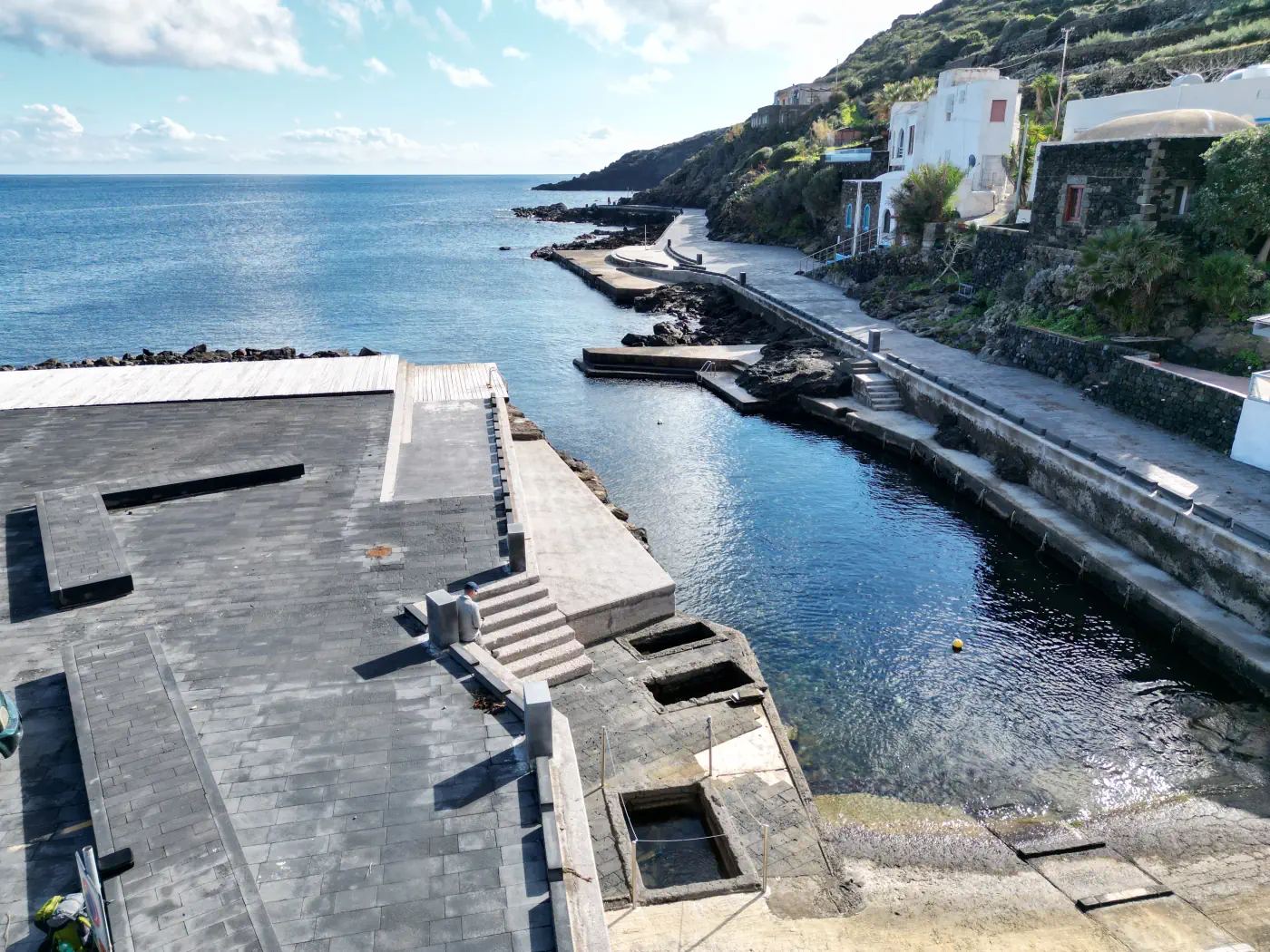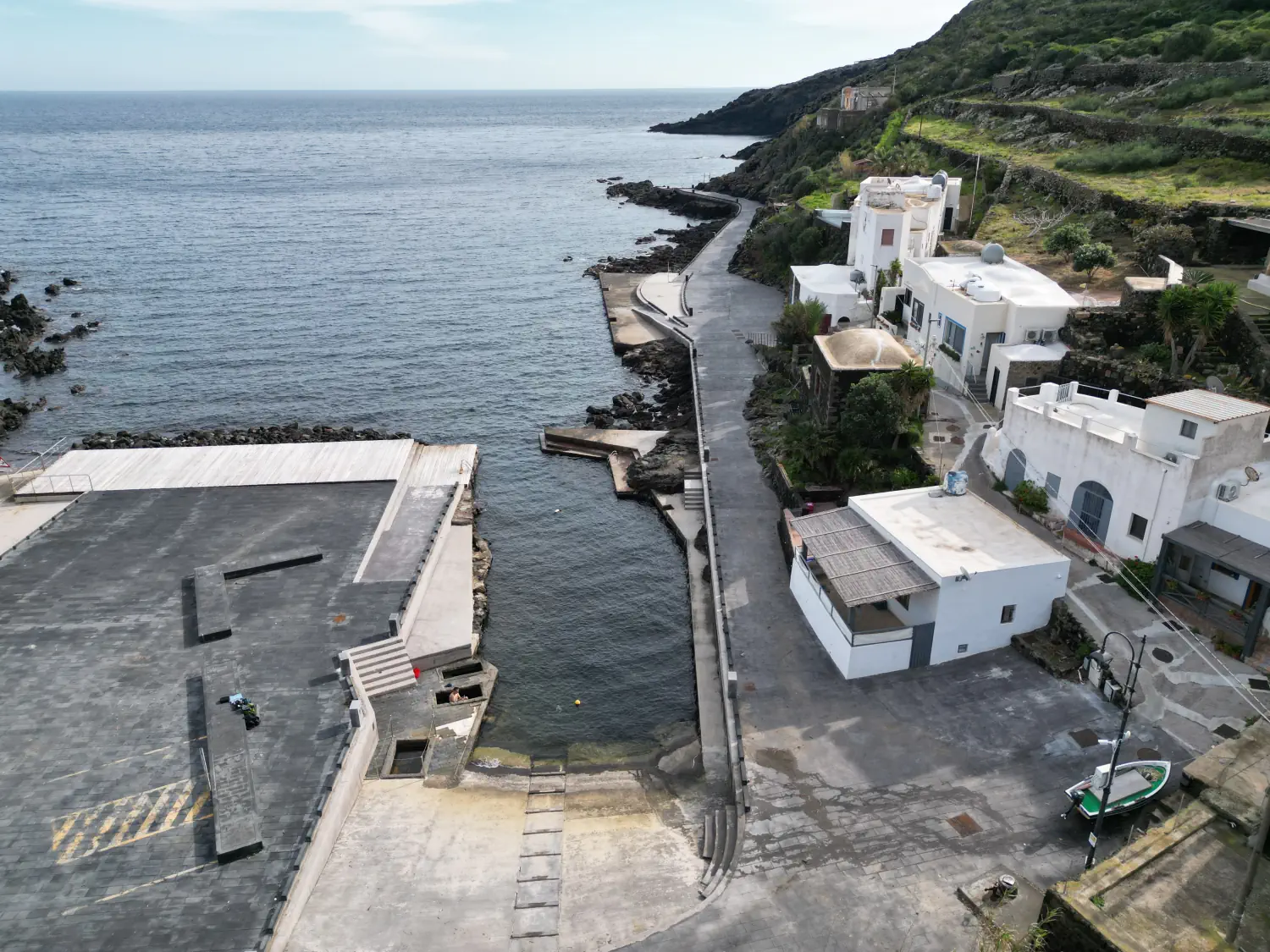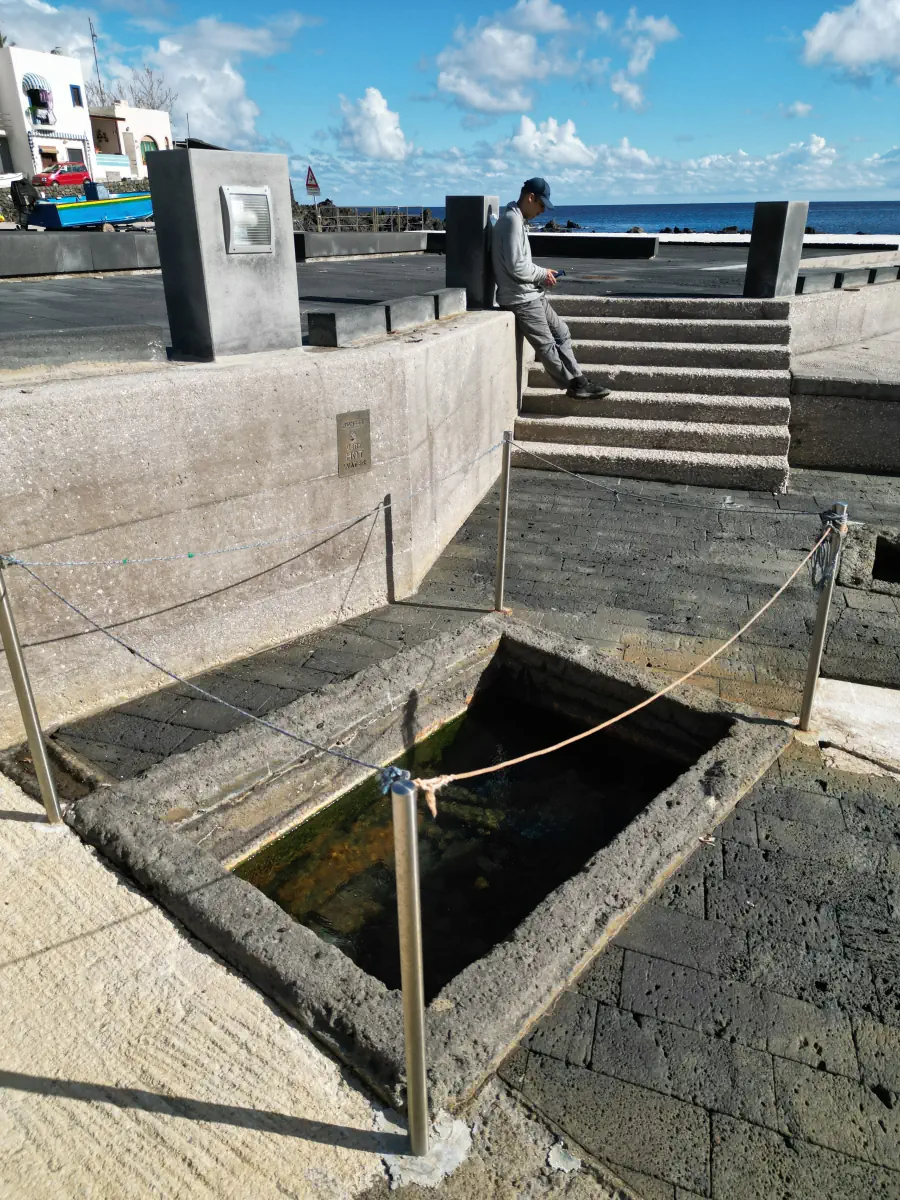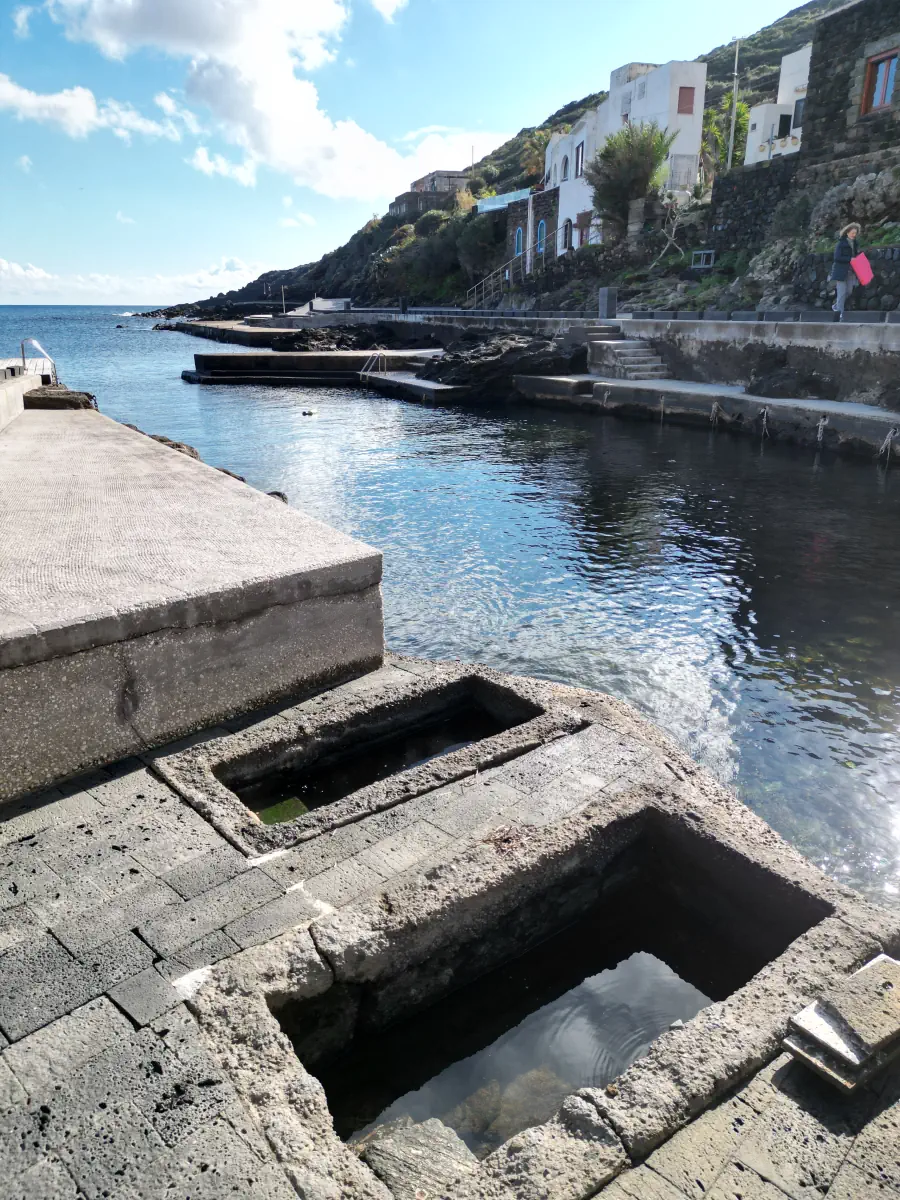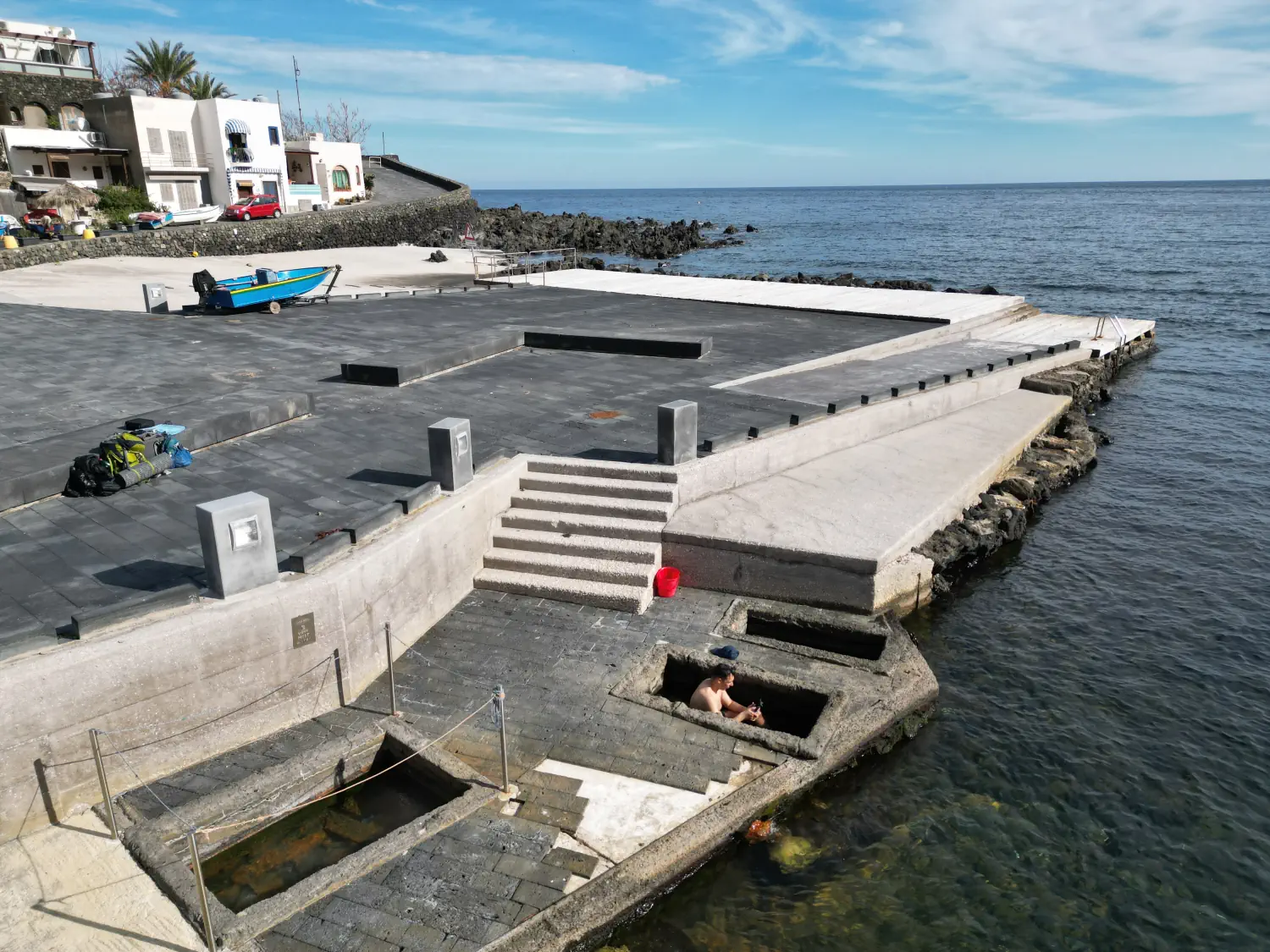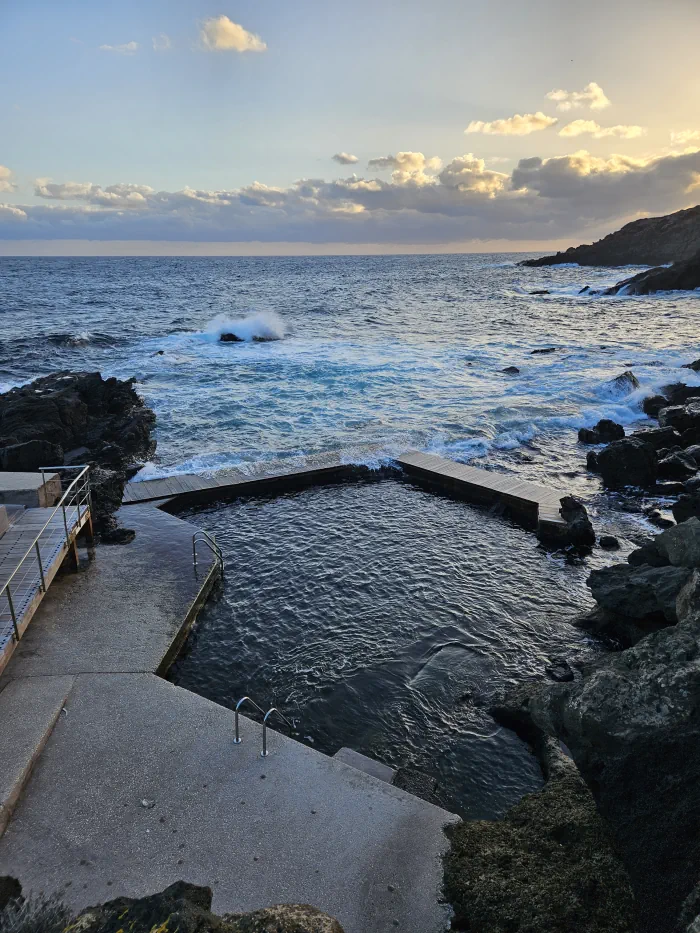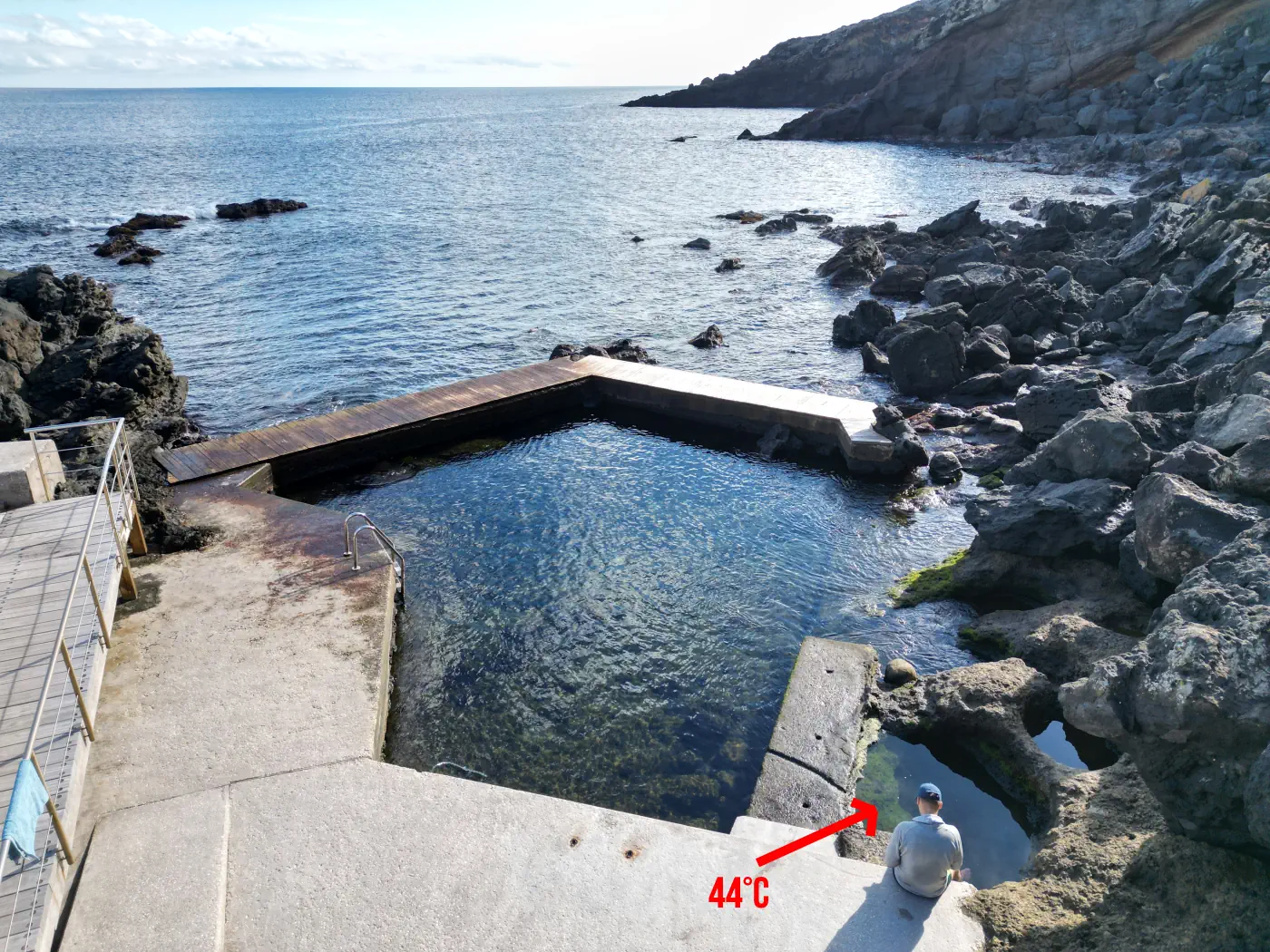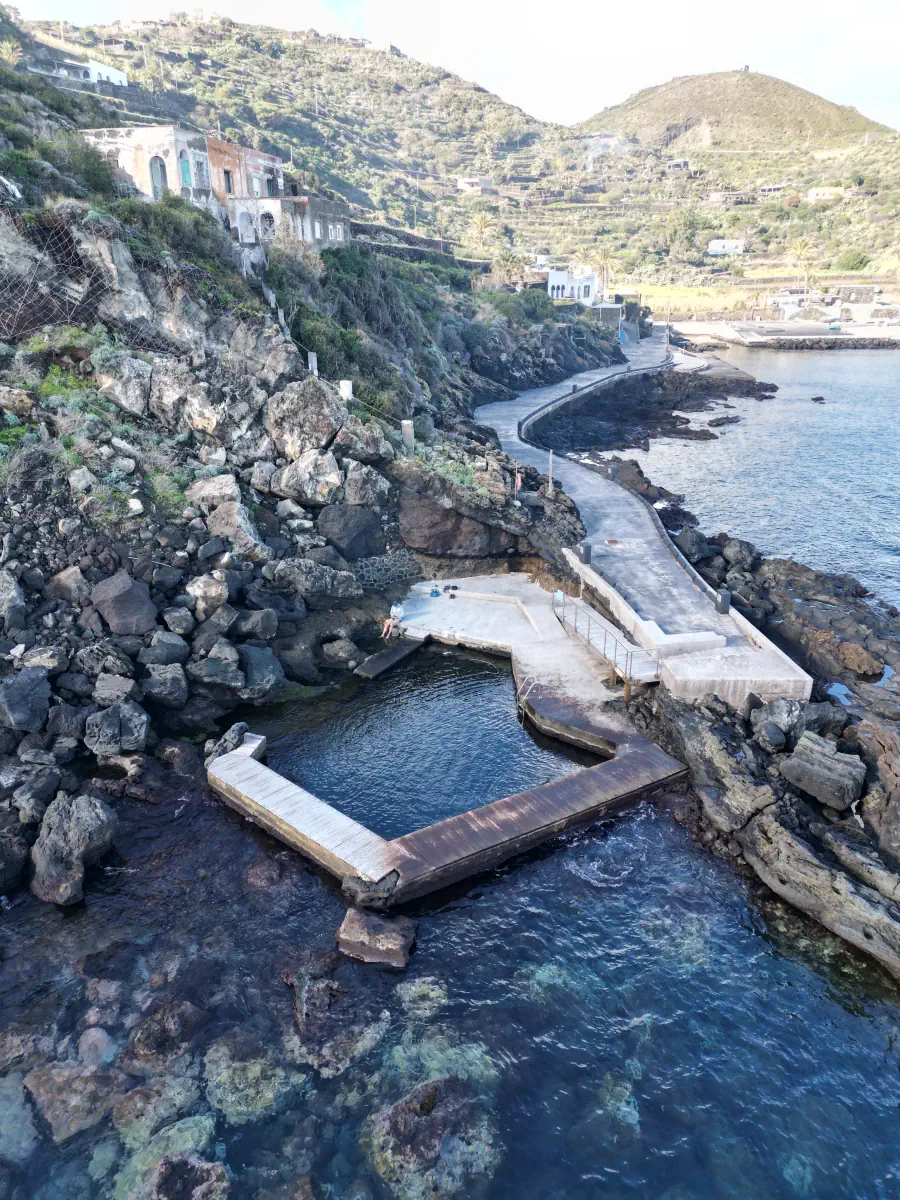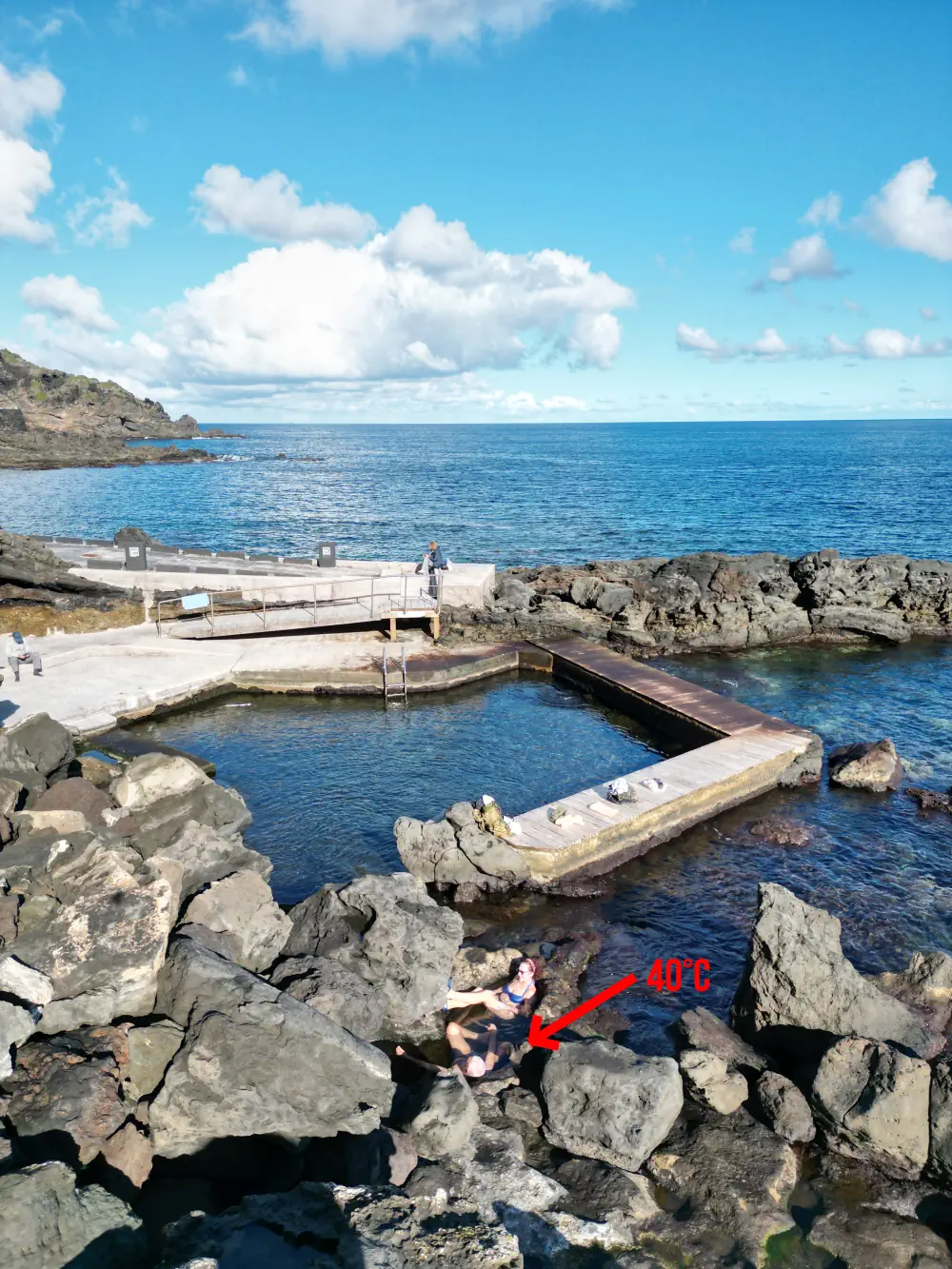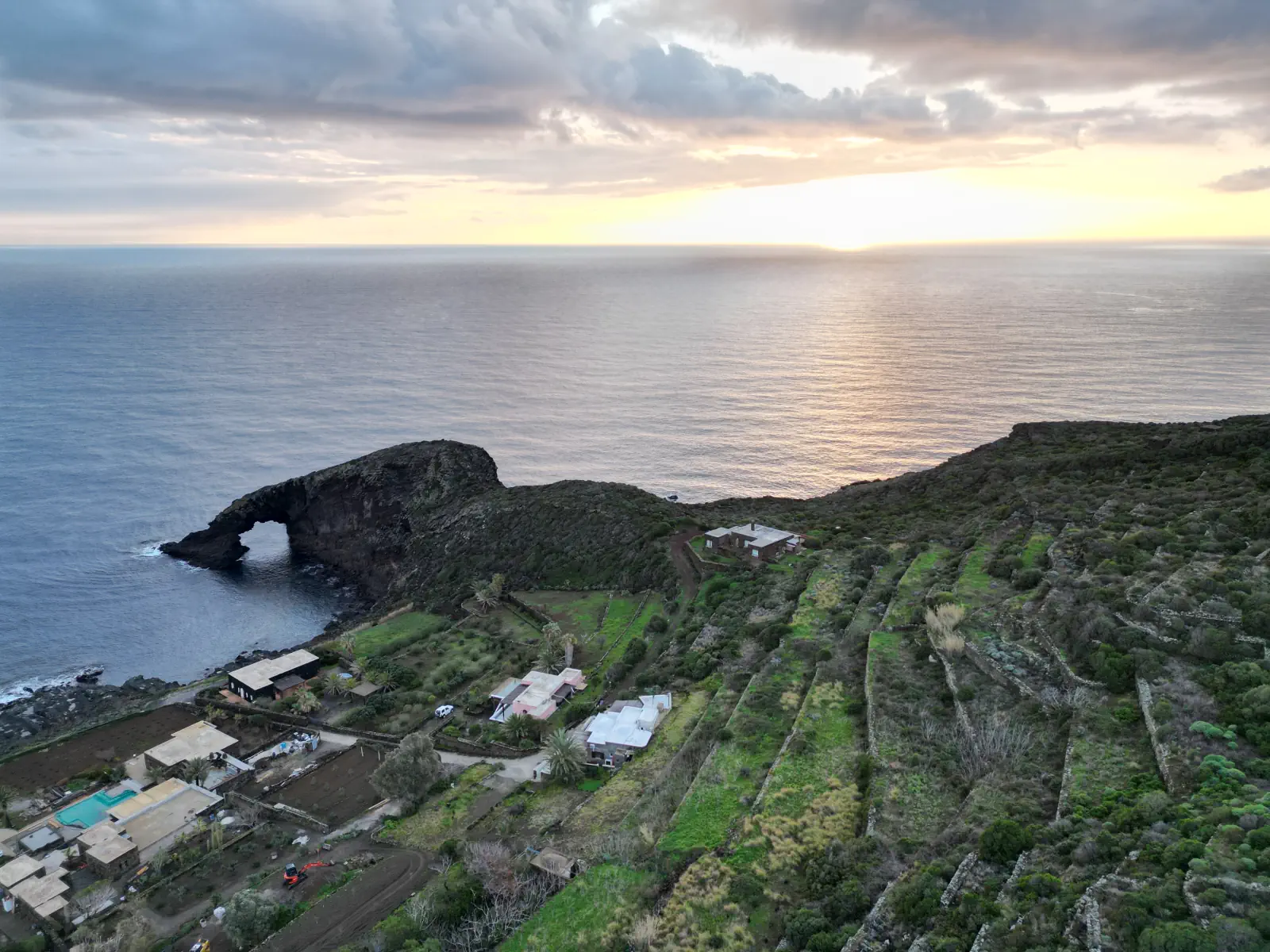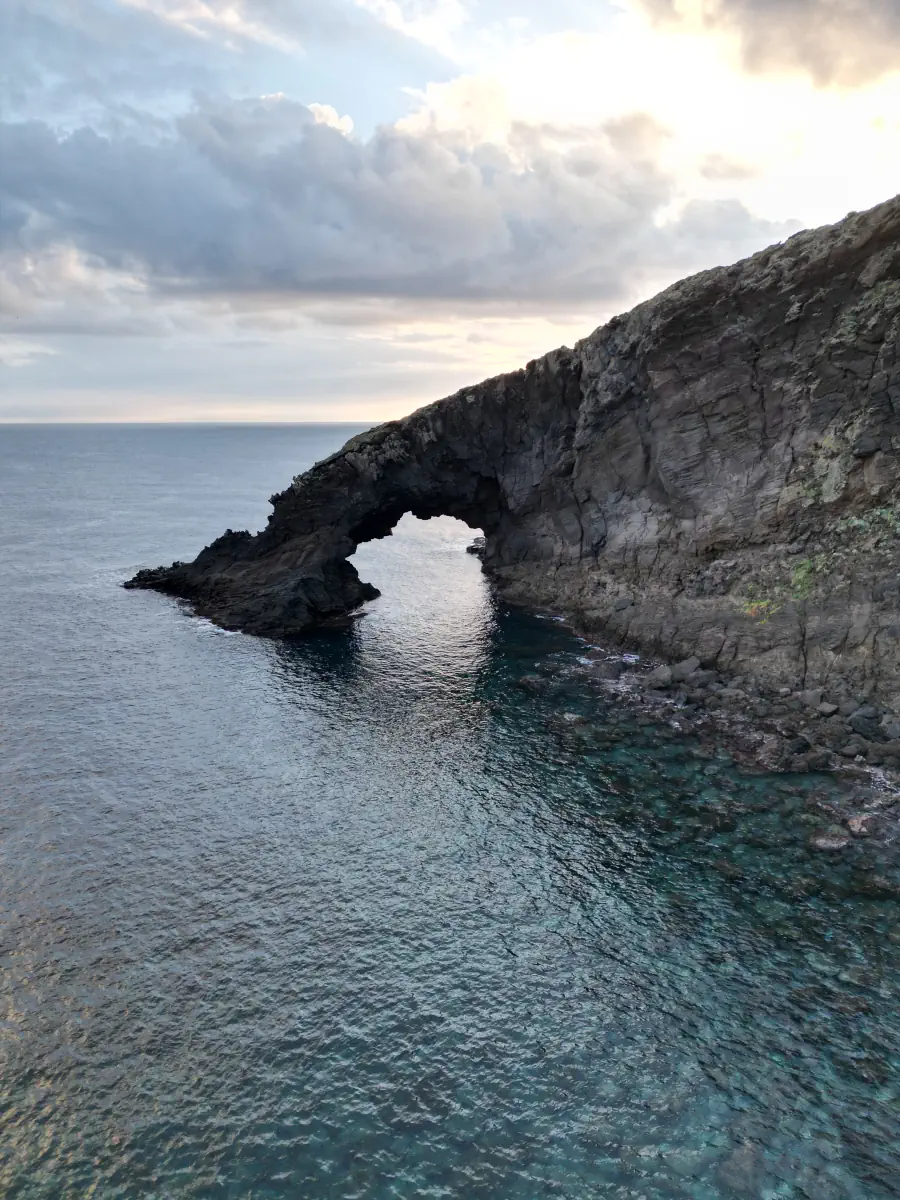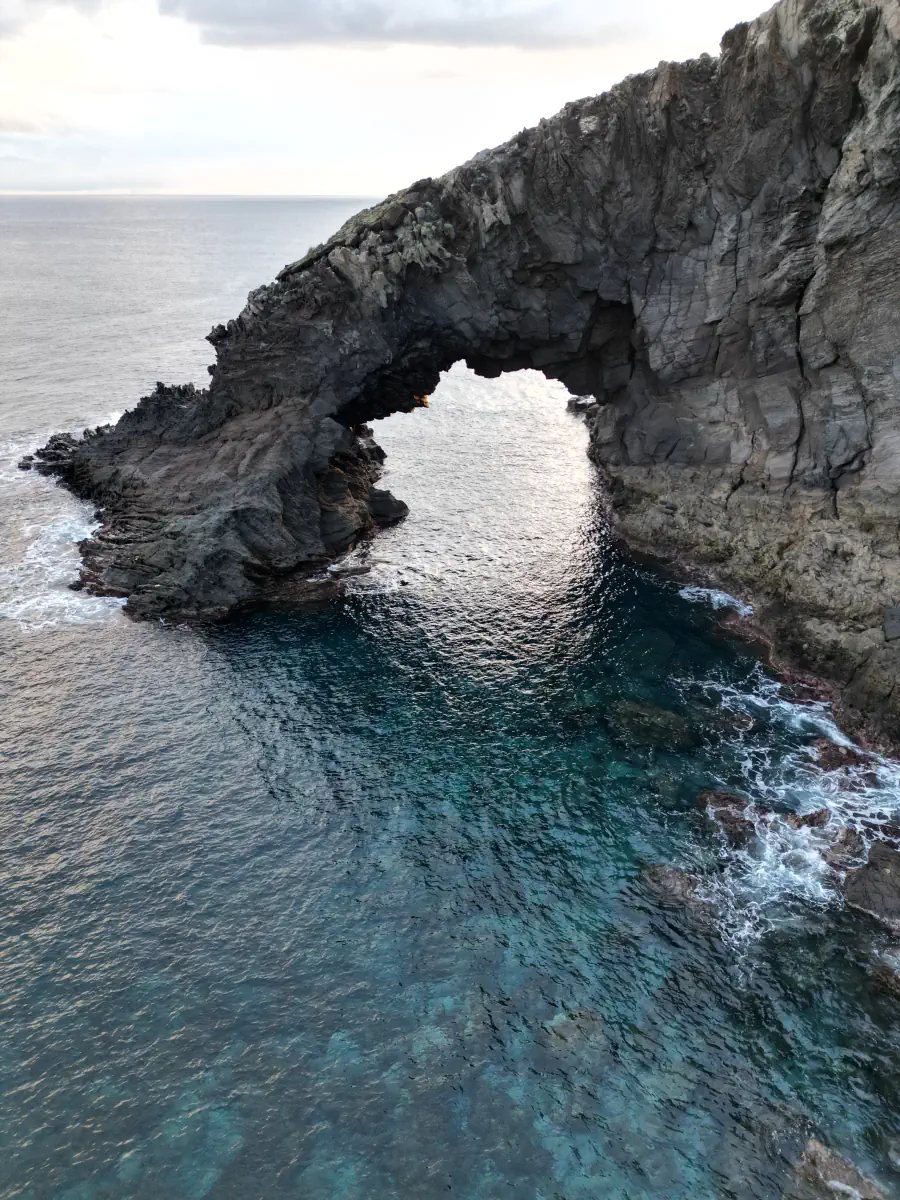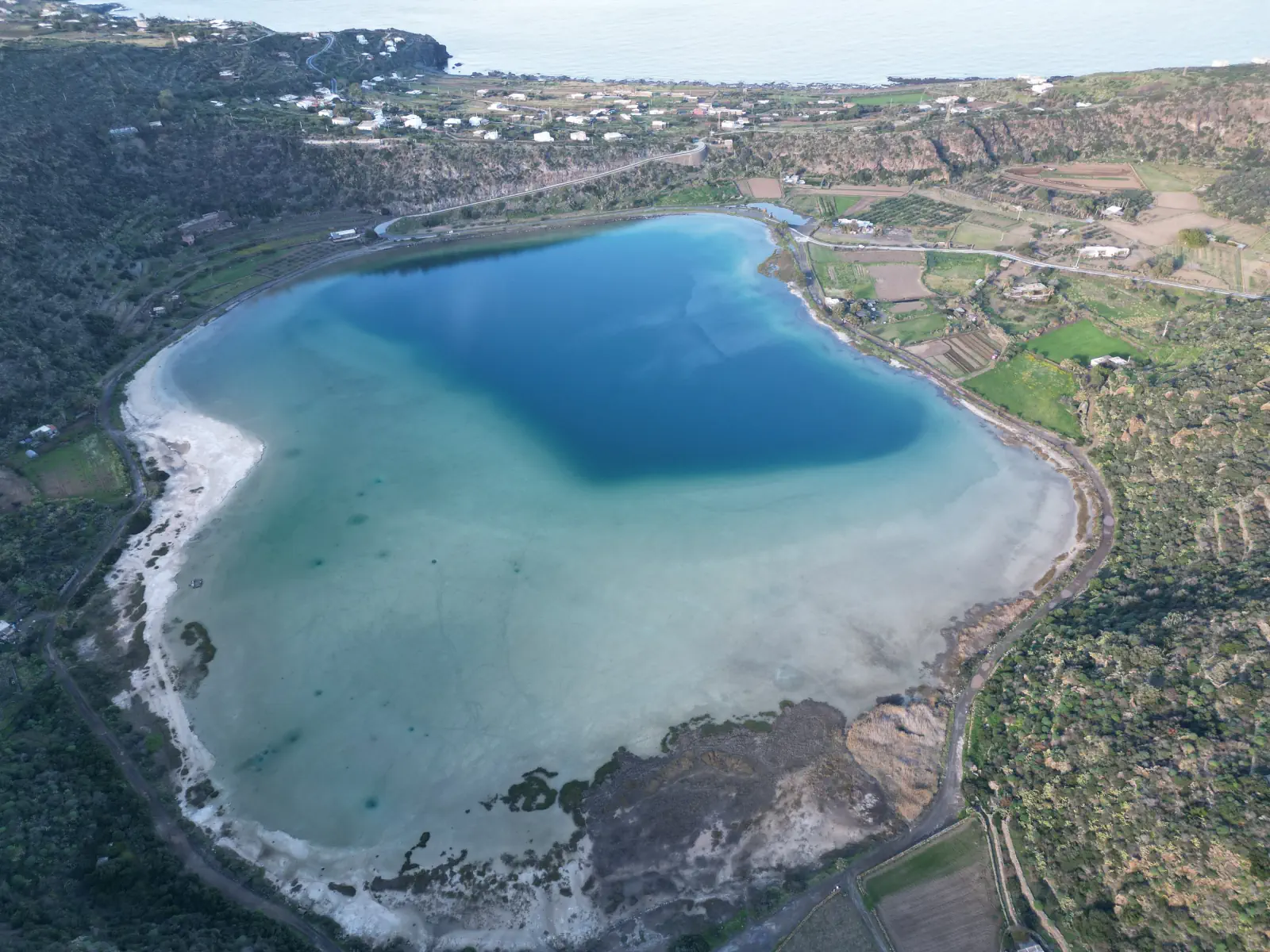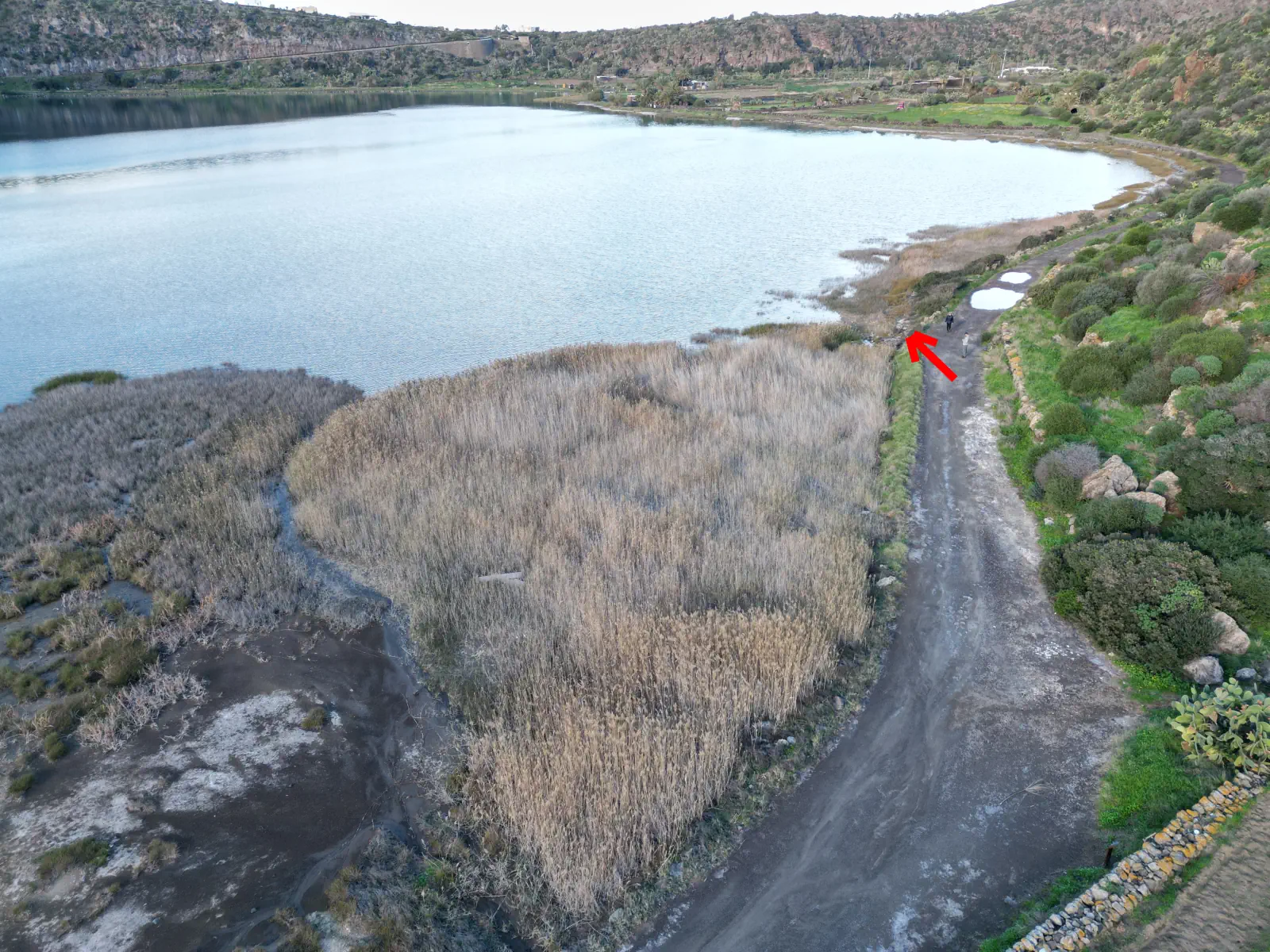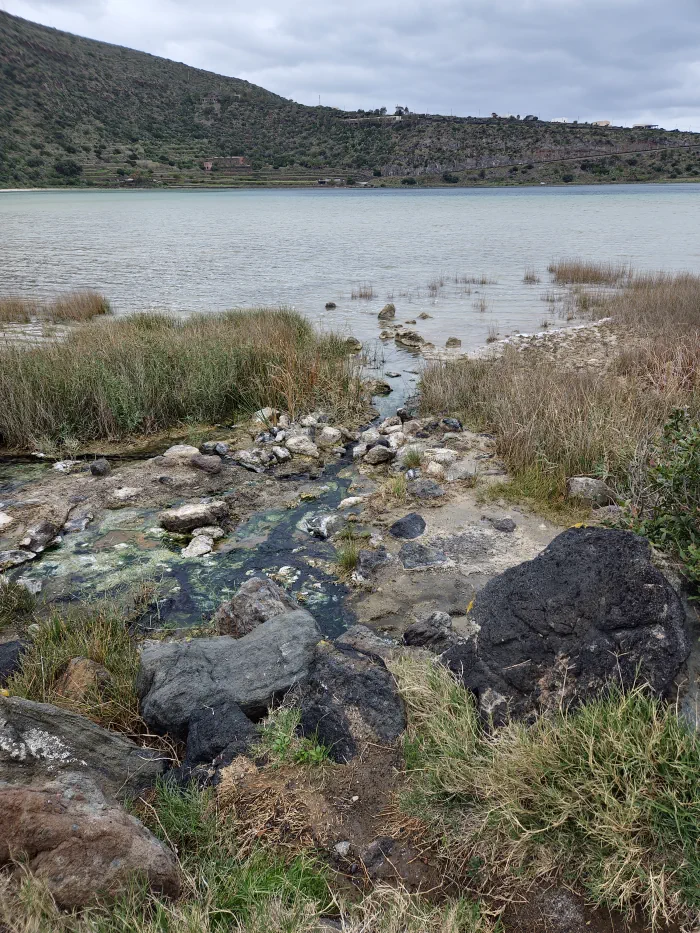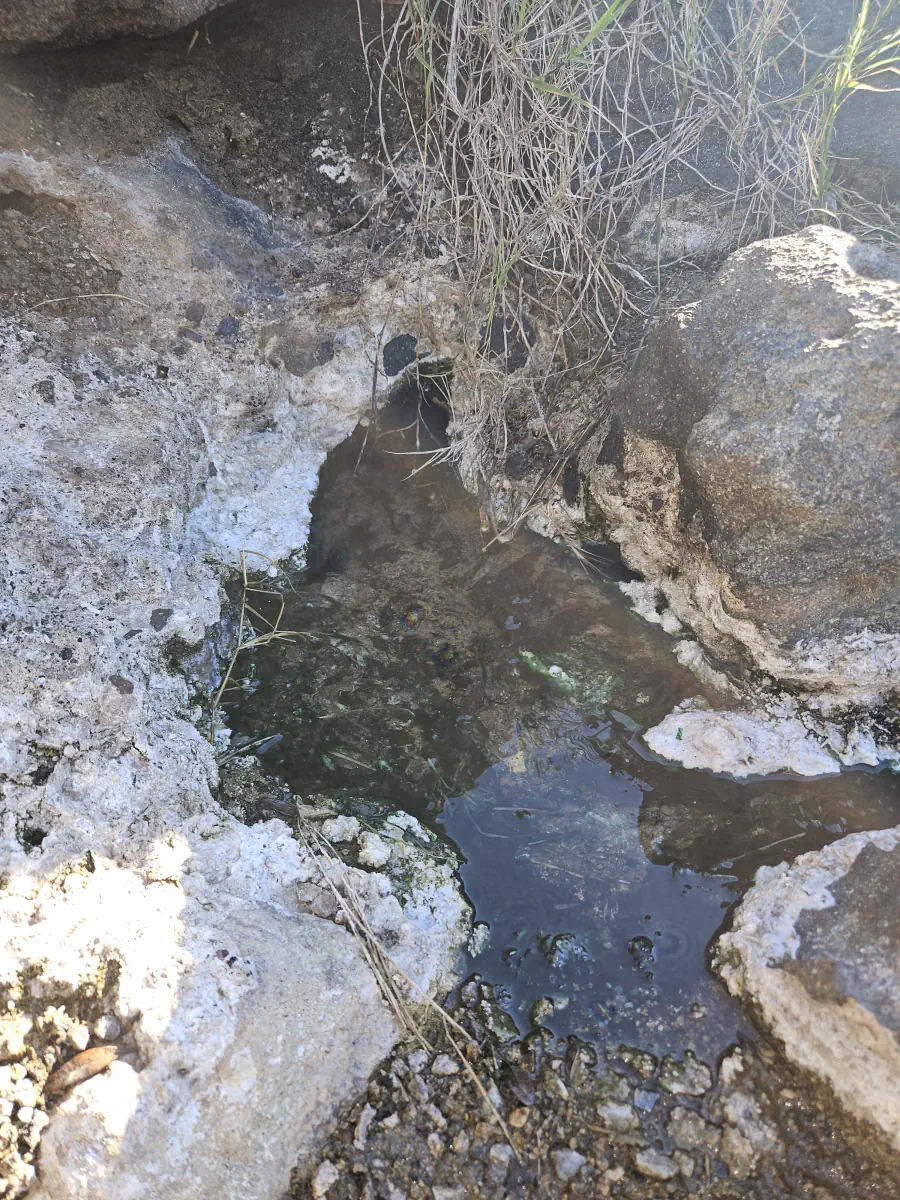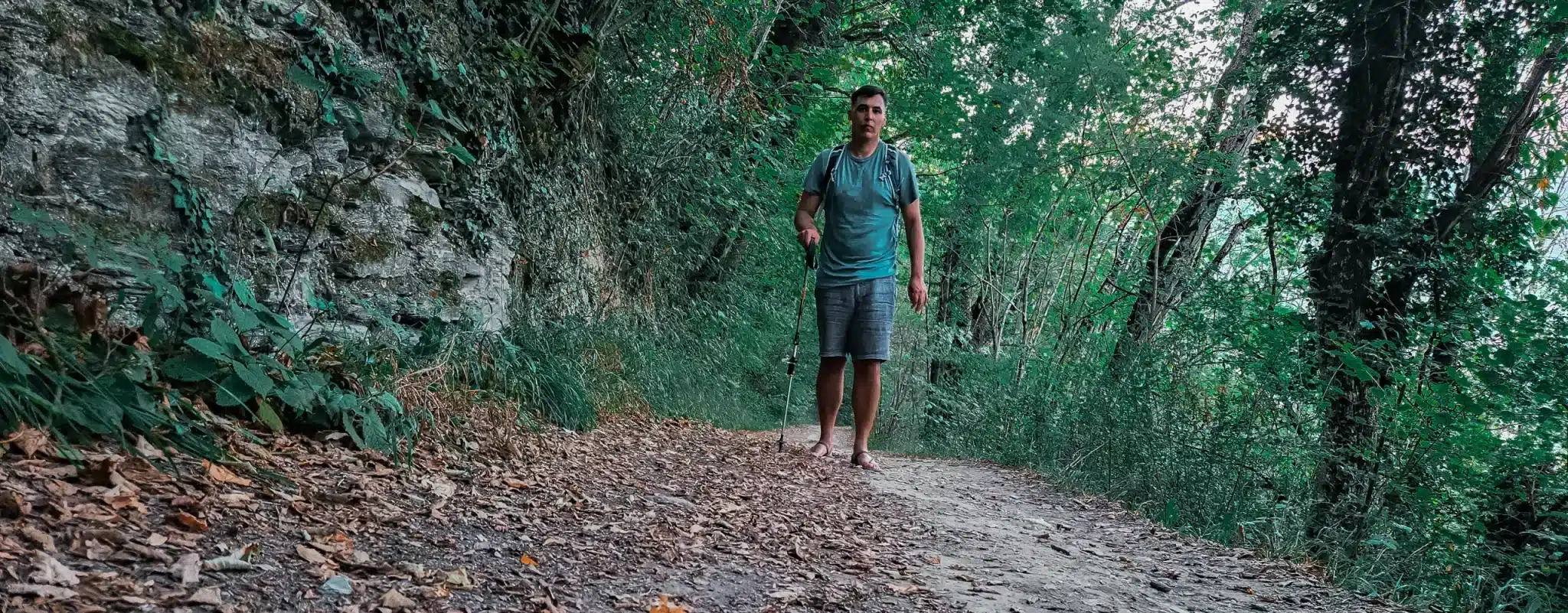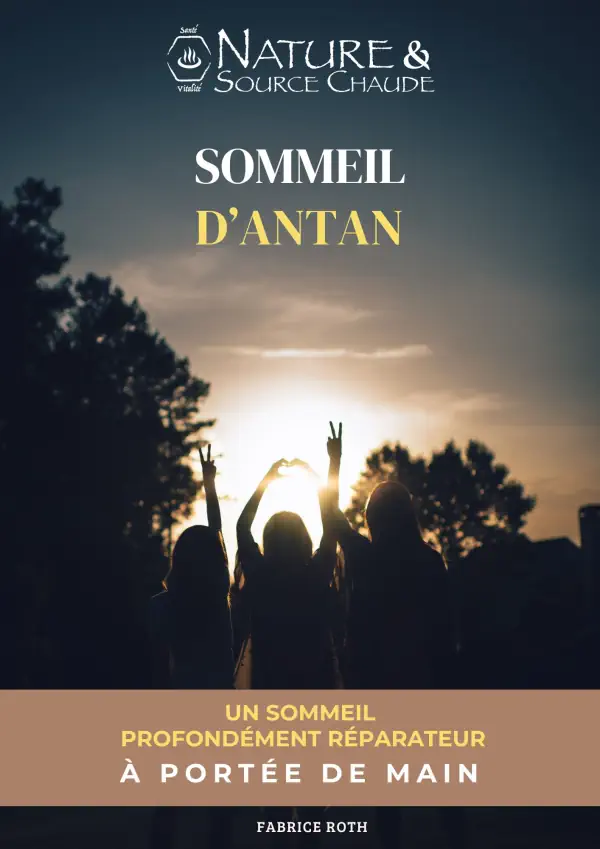Visit the Island of Pantelleria and its Natural Hot Springs
- Nature Source Chaude
- Published on
- Updated on 2 April 2025
Closer to the African coast than the ‘mainland’ of Sicily, Pantelleria is the largest of the Sicilian islands, but also the most remote. This solitary island in the Mediterranean is fascinating not only for its rugged beauty, but also for the many untapped hot springs, located in inconvenient places (sea, lake).
In fact, the island of Pantelleria, which has no shortage of elegance, is a spa with a wide range of natural thermal treatments. During my stay of a few days, I invite you to discover the thermal wealth of this island of volcanic origin, nicknamed ‘the Black Pearl of the Mediterranean’.
IN SUMAMRY:
How to get to the island ?
To reach Pantelleria in the low season, you must take a Siremar ferry from Trapani. The crossing is once a day. Tickets can be booked at the port of Trapani or online via the official website (directferries). Without a vehicle, the ticket cost me 47 euros. A shuttle (a minibus) picks up passengers without a vehicle outside the agency two hours before departure. It will then drop you off near the ferry, which is docked at the port exit (saving you a 45-minute walk). The crossing takes about seven hours and takes place at night.
During the high season (from 1 June to September), Liberty Lines (official website here) offers a 2.5-hour hydrofoil (speedboat) crossing. The agency is located in front of the harbour.
Pantelleria also has a small airport with daily flights. There are flights from Palermo, Trapani and Catania (twice a week).
How to get around Pantelleria?
There are several car hire companies on the island. Vehicles can be hired for less than 30 euros per day. Scooters and electric bikes are also available.
Alternatively, public transport (official website and timetables: Marsala Travel Bus) allows you to get around the main roads of the island. That’s what I did.
In the south of the island the bus will take you to the village of Rekhale and in the north to the village of Tracino.
There is also a service to the airport. Tickets can be bought from the driver and cost €1.30 (€1.80 in 2025).
Buses depart from the post office. The post office is just 200 metres from the Castle of Pantelleria, a colossal structure that stands majestically on the seafront.
In a way, this building marks the identity of the island and the beginning of my journey to this territory of 7,000 inhabitants.
Built (the castle) of lava stone (hence the nickname ‘Black Pearl’), it is a striking contrast to the other buildings in the harbour, which are constructed of more conventional, ‘modern’ materials.
But here we are in the capital of the island: the town of Pantelleria. This volcanic stone has many advantages: it doesn’t deteriorate, it can withstand the island’s harsh climate and weather conditions, it is economical and requires no maintenance.
This castle, which houses a museum, may be of some historical interest when visiting the island.
But for me, I can’t wait to discover my first hot spring. Should I go to the north or south of the island? It’ll be south by taking a bus to Rekhale.
Map of the hot springs of the island of Pantelleria and information
The map shows the location of the island’s hot springs, which are a must during your stay.
When to go to Pantelleria ? From April to October.
Another point : the more crowded it is, the more difficult it can be to get a bath or a place in certain thermal sites where space is relatively limited (Gadir Baths, Sataria and Benikulà).
Grotta di Sataria
Leaving the town of Pantelleria by bus, I notice that many of the houses scattered around the hills have lava stone walls. In fact, these particular buildings, typical of the island, are known as Dammuso. You can feel the influence of an Arab civilisation that exploited the island’s powerful resources.
Ten minutes later, the bus drops me off near a sign pointing to the Grotta di Sataria (Sataria Cave). This stop precedes the one at the entrance to the village of Scauri. There are 4 or 5 parking spaces in front of the stop. After descending a staircase (illuminated at night) along the steep coast, the Grotta di Sataria is revealed.
Outside the cave, there is a large pool where you can swim in slightly less turbulent seawater. This is also one of the most accessible beaches (Spiaggia di Sataria) on the island of Pantelleria.
Since 2012, the cave was being closed by the authorities for safety reasons. The cave was in poor condition and not maintained.
Various grants, at a total cost of €559,000, have made it possible to restore the site (work is due to start in September 2023) and make it safe so that it can be made accessible again from June 2024.
At the time of my first visit in February 2024 (safety work in progress), the cave was in a deteriorated state. Its damaged concrete platform and falling rocks coming from the vault (metal mesh was installed) made it very dangerous. Repairs were becoming urgent, as you can see from the photos taken in January 2024.
Inside the cave, you have to cross the concrete platform to reach two pools of hot water full of mystery.
The colour of the concrete platform adds an aesthetic touch to the cave. The pastel colour also reflects the light better.
When I visit, it is still quite dark. The light from my torch (smartphone) is essential to make out the contours of the pools and to secure my steps. There is very little natural light. For a dip, I recommend coming on a clear day (especially in winter) or bringing a camping lantern (or a storm lamp for more natural lighting).
These pools may contain algae washed in from the sea (which is best removed). These algae are mixed with thermal water of about 40 degrees. However, one of the 2 pools is cooled down (to around 32 degrees) by the infiltration of sea water. A few metres away, the sea rushes into the cave, creating a special echo.
Could you be surprised by the rising tide when you go for a bath? To be on the safe side, it is easy to find out the daily tide times in Pantelleria on the Internet.
Finally, at night, the view of the baths illuminated by LED spotlights (even underwater) has a certain effect. You can even see the clarity of the water.
This thermal water (sodium chloride), used since ancient times to treat rheumatism, skin diseases, arthritis, etc., therefore loses its therapeutic properties (at night). Nevertheless, this type of nocturnal thermal bath, located right by the sea, offers visitors a unique and unsettling experience.
Terme di Nikà
I continue on foot towards the Terme di Nikà, where the thermal waters flow into the sea. They are just a few kilometres from the village of Scauri.
The road is so quiet that I didn’t see any tourists
This Mediterranean haven is perfect for those seeking peace and tranquillity. I walk alone for an hour and a half along a winding road surrounded by Mediterranean scrub and rewarded with beautiful views of the sea.
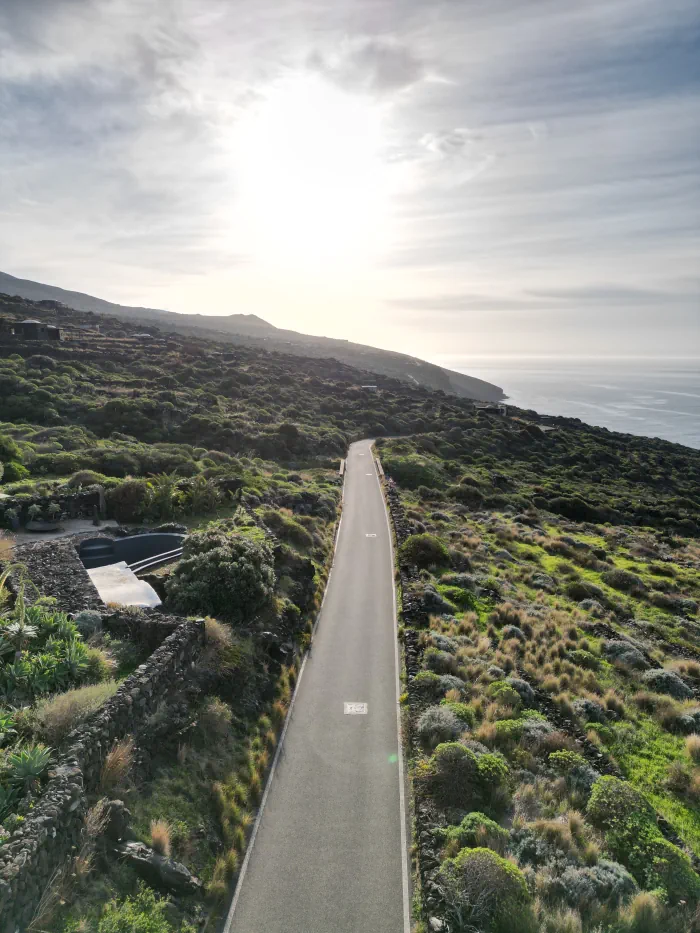
I then leave this charming road and take a stony path that leads to the cove of Nikà. At the beginning of the path there is a dirt car park where you can leave your car (6 or 7 spaces). Then the path becomes impassable.
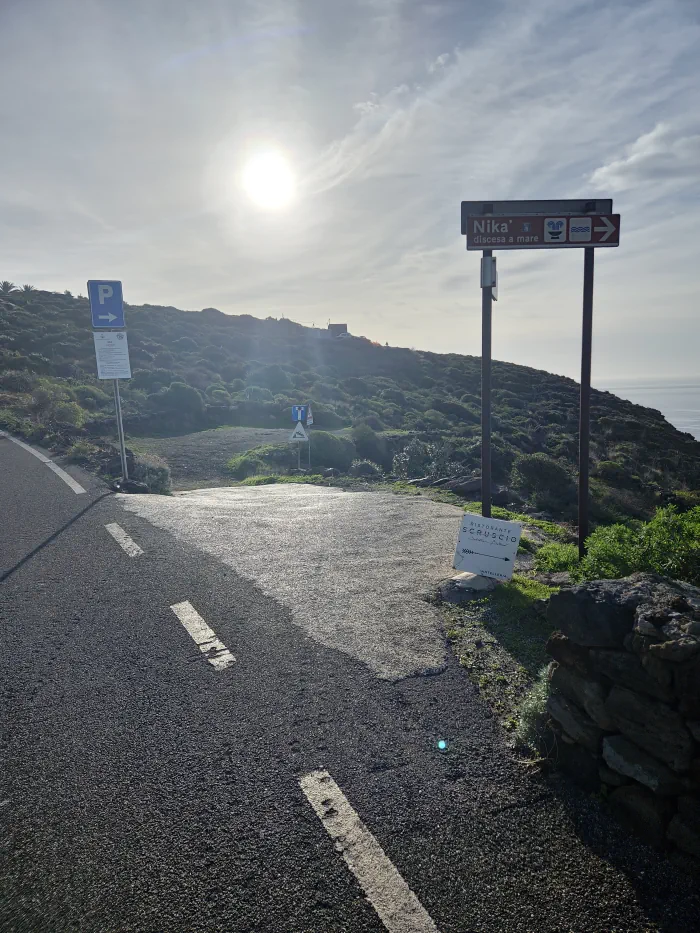
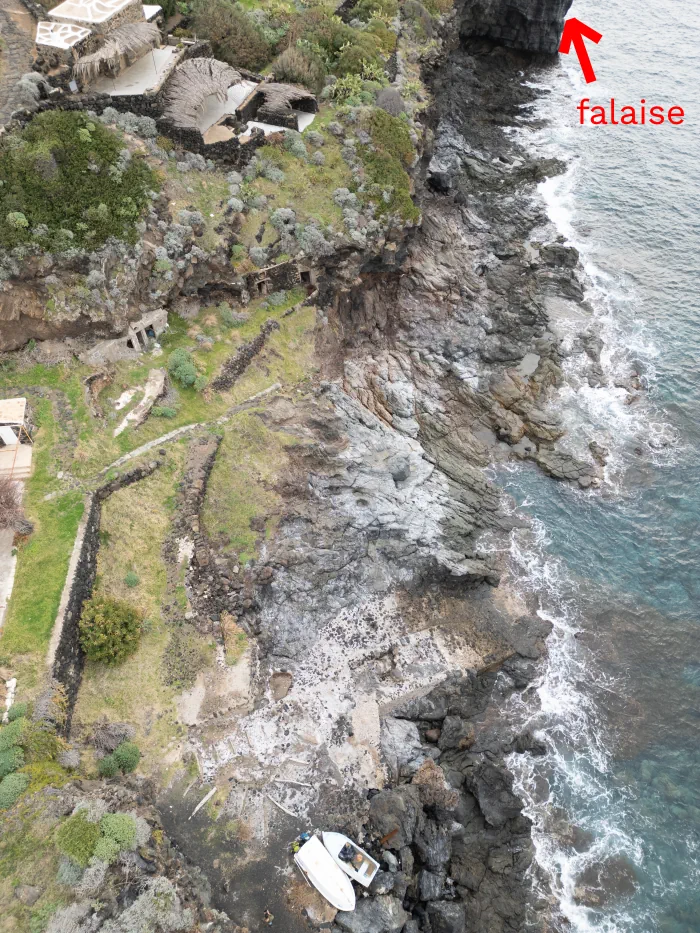
After a 15-minute descent on foot, I see the cove and am amazed at the presence of old rafts, left as they are. I watched the sea crash against the rocky shore. That day, the weather forecast predicted winds of between 20 and 30 km/h. The deep sinuosity of the coastline and the light breeze pushed the waves up against the rocks.
However, I have no trouble getting over the rocks to the cliff on the left. But you have to swim around it. The Nikà hot springs are behind this cliff, about 200 metres away. Being a poor swimmer, I prefer not to risk it for fear of being swept away by the waves.
Alternatively, the site can be reached by boat (in the summer) or, in calm weather, by swimming.
Almost at the beginning of the path leading down to the cove, an abandoned dammuso can be seen on the left. The Terme di Nikà are a short distance below.
But there is no really spacious or convenient path across the rocky coast. So, it’s best to stay away from the Terme de Nikà outside the summer months, and stick to the Sataria Cave or the Baths of Gadir, which are completely safe.
🤿 On the spot and in the (sea) water, it is possible to look (don’t forget your goggles or mask) at the rocks that emit hot water. This thermal water, rich in minerals, mixes with the cold sea water and nourishes it, giving it undeniable therapeutic virtues. The water temperature can reach 40 degrees in some places. In winter, however, the sudden change from hot to cold can be uncomfortable for some bathers.
Bagno Asciutto - Grotta di Benikulá
A beautiful walk to the cave of Benikulà
To reach to the Grotta di Benikulà (Benikulà cave), also known as Bagno Asciutto (dry bath), I walk back to the village of Scauri. Above the village there is a large car park paved with lava stones, which is the starting point for many walks.
The island of Pantelleria is particularly hilly. Its highest point, The Montagna Grande, is 860 metres above sea level.
A well-marked path leads to the cave in about ten minutes, past cacti, holm oaks and beautiful Mediterranean flora, with the sea in the distance. The beauty of the path and the natural decoration (low volcanic stone walls, wooden fences) give the impression of being in a garden.
Discover the natural sauna
Hidden in the cave, I discover this vaporarium, a real “natural sauna”. This natural hammam, which emits thermal vapours and gases, is explained by the intermittent rise of thermal water from a natural underground spring. This water is filtered through the rock walls and the result is a gentle, humid heat of 38°C. After putting on a bathrobe, I enter the cave for my steam shower (dry bath). I sit down on some rocks on the floor. Less than two minutes later, I was sweating profusely. I come out with a fresh, rejuvenated face.
You can lose a litre or more of sweat per session (10 to 15 minutes is recommended). The sauna is very effective. The vaporarium is a powerful and complete metabolic stimulator. The body speeds up blood circulation, perspiration, ventilation and the elimination of toxins.
For the more sensitive, it is possible to lie on the floor under the vapours, making the experience more tolerable. This is what the Finns do in their artificial sauna. The benches are arranged in tiers around the room, and the more energetic bathers lie down on the upper tiers (the vapours rise naturally).
The cave holds 5 or 6 people.
Outside, the chamber next to the cave is the frigidarium. In the history of bathing, the frigidarium was often the last exercise for the bather. The bather must return to a room near the entrance or exit.
Here, a terrace surrounded by stone seats allows the bathers to return to their normal body temperature after a powerful cool-down.
In the meantime, you can admire the beauty of the landscape and the enchanting panorama (the plain of Monastero and its crops, the sea).
The best sauna ?
The Benikulà cave represents a very high level of perfection in sauna design. It’s thanks to the Pantelleria volcanoes, which never cease to heat up, that the cave is filled with beneficial vapours. There’s no need to heat a fireplace with wood for 3 hours and then throw buckets of water on glowing stones. This natural sauna is free of charge and open 24 hours a day.
A large opening (the entrance to the cave) also serves to evacuate the excess carbon dioxide, ensuring good ventilation. I found a level of 500 ppm CO2 at the bottom of the cave. If you would like to know more about the importance of air renewal and adequate levels of CO₂ in a room, I invite you to read this article: How to Cleanse your Lungs with Simple, Natural Ways ?
The cave is also a living medium rich in micro-organisms (good bacteria and fungi), even more so when there is humidity. On the other hand, high humidity can be a problem in “artificial spaces”, as it encourages the proliferation of moulds and fungal spores, which can be harmful to the respiratory tract.
Finally, the air is more ionised. A cave releases mineral salts that are full of negative ions.
Therapeutic properties
This natural sauna is used by tourists and locals alike to treat rheumatism. There is another sauna on the island, in the Grotto dei Briganti (Bandits Cave). The Favare can also be used as a sauna.
As well as the benefits you’d expect from a sauna, the invigorating thermal vapours and gases (from the Caves and Favare) can be beneficial to the respiratory system.
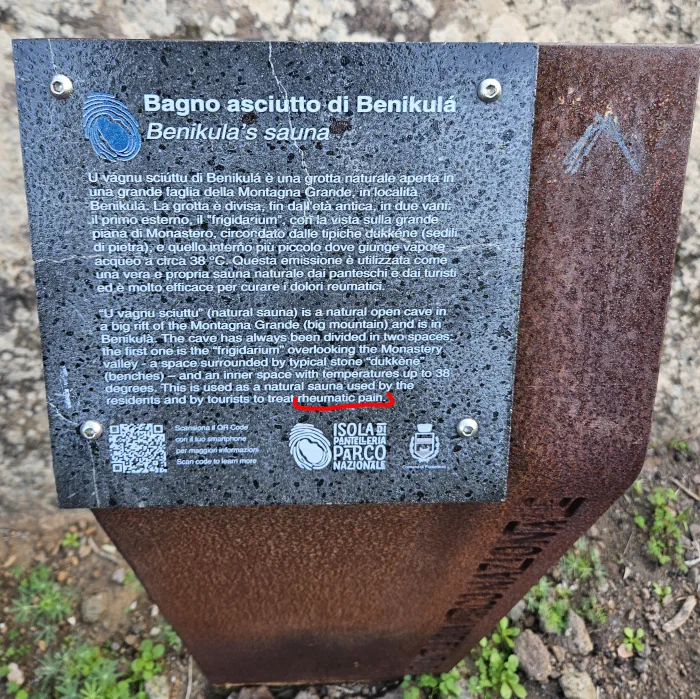
These fumes release a mixture of gases with stable concentrations and ratios. According to an analytical report[1] published in 1994, there are high concentrations (several thousand ppm) of hydrogen (H2) and methane (CH4). Methane is also present in lower concentrations in all the hot springs of the island.
There are also varying amounts of helium, depending on the favare. Concentrations of 10 ppm and more have been recorded. Its (natural) concentration in the atmosphere is around 5 ppm.
All these gases: hydrogen (H2), helium (He), methane (CH₄) have particularly interesting properties for the treatment of the respiratory tract. To find out more, I invite you to read our article How to Cleanse your Lungs with Simple, Natural Ways ?
Favare
From the Benikulà cave, I continue my walk along an easy, well-marked path following the “Favare Grande” itinerary. The Favare is an intermittent emission of vapours and gases produced by the volcanic activity of Pantelleria. The temperature can reach 100°C.
The path that leads to Favare attività vulcanica (volcanic activity) crosses a beautiful plateau and takes about 50 minutes. This place is a geothermal wonder where you can see numerous fumes emanating (favare).
Just before you get to Favare Grande, impressive fumaroles (Fumarole della Vecchia Caserma) emerge from a concrete slab next to a disused building (an old military barracks made of lava stone), which is well worth a stop. This former barracks is located on a hill slightly off the signposted path. But it’s still accessible in less than 2 minutes.
On the surface, you can see a multitude of fissures from which swirls of vapour are released. If you go to the ‘Favare Grande’ site, about ten minutes away, the scene is similar. But one of them is a real marmite. This is Favare Grande, the most spectacular of all. This is where you realise that if you get a little too close, your body will get wet and then quickly soaked. In fact, the locals use it as a natural sauna. Wooden planks resting on stones on either side are evidence of its use.
I admire the scenery one last time and then decide to take another signposted path perpendicular to the one that leads to Favare. This takes me directly to Rekhale (near Scauri) via a fairly rapid descent.
The Baths of Gadir
On the north side of the island, a road provides direct access to the sea and the charming village of Gadir. Needless to say, access to the sea is easier here than elsewhere, and the hot springs attract crowds who can’t resist a dip. Parking is also easy (large car park). If you don’t have a car, the bus (Pantelleria-Tracino line) will drop you off at the “Bivio Kamma Gadir” stop, less than a kilometre away (10 minutes walk).
Arriving at the coast, the landscape is not lacking in elegance, with scattered white roofs and terraces overlooking the sea. The vaulted, whitewashed roofs of these dammusi (island houses) allow rainwater (scarce on the island) to be collected in cisterns.
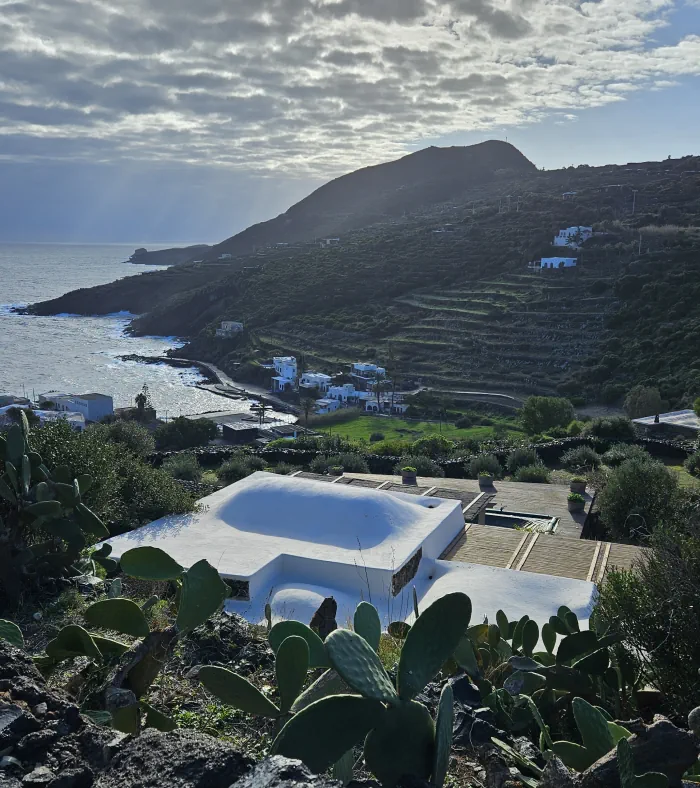
When I arrive at the 3 hot water pools, there are no regulars or strangers around. In this small fishing port, there is an air of calm, cleanliness and comfort in the month of January.
When the port is busy, these 2 hot water pools are very much in demand, so you’ll need to be patient. These shallow pools are for 1 person. The hot water comes in at the bottom and is perfectly clear. The 2 smaller pools have a lower temperature (variable) than the larger pool (55 degrees). Their connection to the sea allows the user to choose the desired temperature. In any case, these hot thermal waters must be cooled by the sea water.
A little further along the coast (200 metres away), there is a large area protected by a jetty where bathers can soak in the warm water and get some exercise.
At the time of my first visit (January 2024), there were strong currents crossing the jetty. However, the temperature of the pool, which is warmed by thermal water coming up from the ground, was around 25 degrees (a little low in winter). In summer, people who like to splash around or chat might prefer to take a dip in the large pool rather than the smaller ones.
Also, it was only on my second visit to the island (January 2025) that the three small natural hot water pools near the rocks were visible (immersed by seawater).
The Gadir springs (like the Sataria spring) all produce fine bubbles that rise to the surface. They contain dissolved CO₂ and are enriched with bicarbonate ions, which give them special properties. These thermal waters are said to cure rheumatism, arthritis and skin diseases.
Arco dell'Elefante
Just 4 or 5 kilometres from Gadir is the village of Tracino. From here, a fairly rapid descent leads to one of the most famous places on the island of Pantelleria: the Arco dell’Elefante (Elephant Arch). The rocky coastline rises in steps, its beautiful lines creating a splendid landscape. The road brings you very close to the sea and provides easy access to some of the most popular coves : Cala Levante and Cala Tramontana.
In this incredible landscape, a bridge that looks like an “elephant’s trun” juts out over the sea to delight the eye. In fact, this picturesque spot so aptly justifies its name : Arco dell’Elefante (Elephant Arch). This is also the place to see a great natural spectacle: the sunrise.
Lago Specchio di Venere
To reach Lake Specchio di Venere (Mirror of Venus), take the bus (Pantelleria-Tracino line) and get off at the Bivio Lago di Venere stop, which is ten minutes’ walk away. Once arrived, the panorama is sublime. This cone, an ancient volcano, is home to a heart-shaped mass of rainwater and thermal water. Suffice it to say that this lake is a breath of fresh air for travellers.
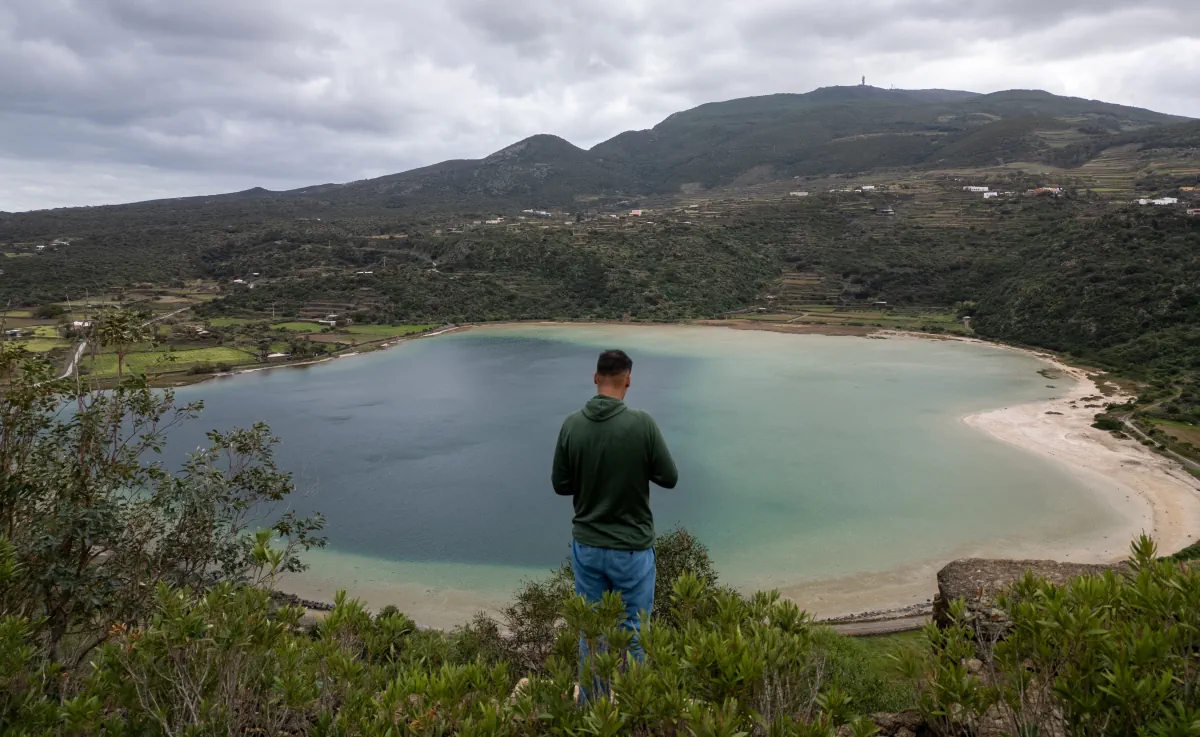
The lake, which is 12 metres deep, is partly fed by thermal water from three springs. These hot waters flow at temperatures between 30°C and 60°C and are almost all concentrated on the southern shore, where the lake narrows slightly between wooded hills.
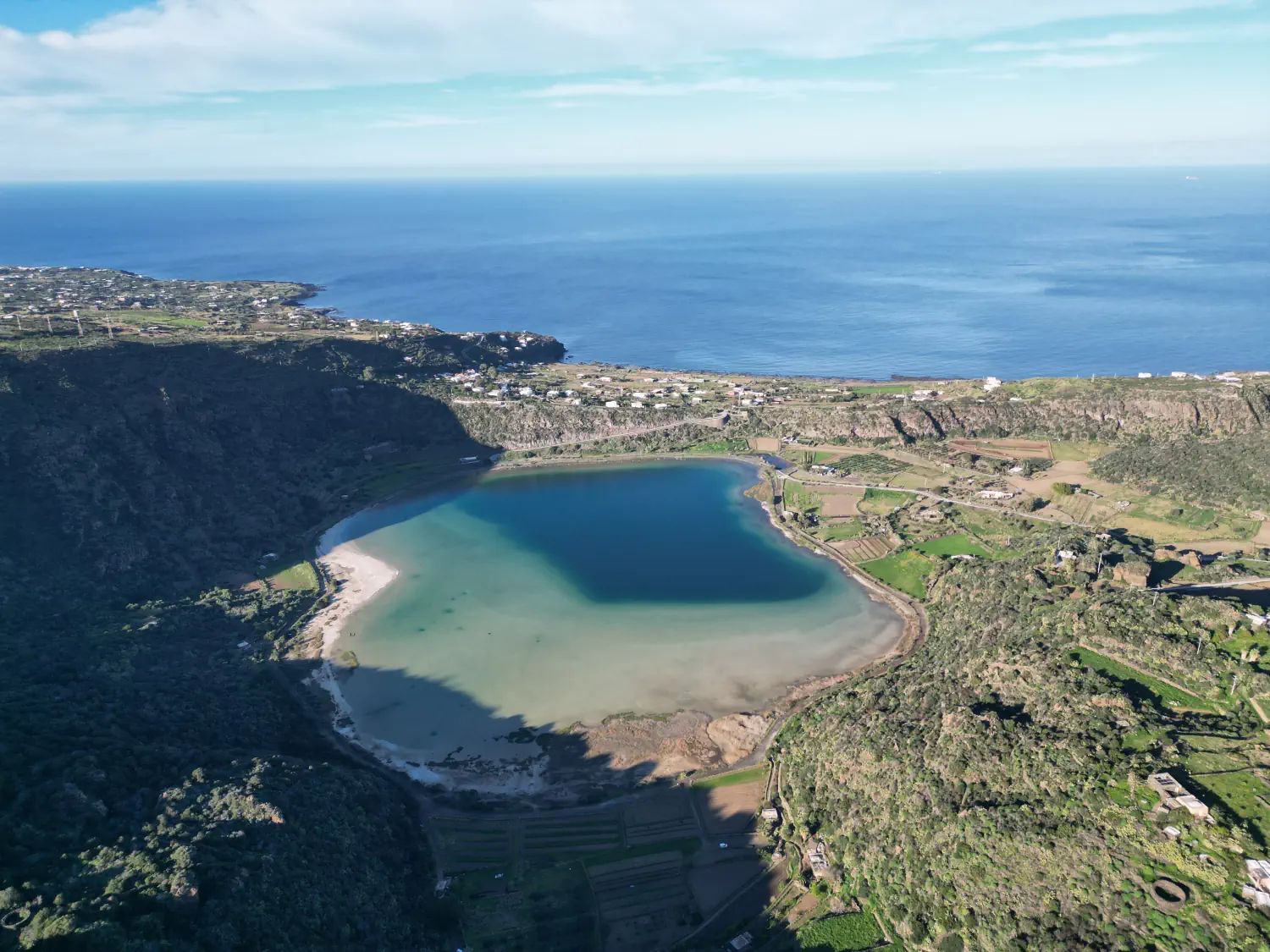
One of them has these waters coming out of the rock, in a place surrounded by reeds. It is called Sorgente termale del lago (thermal spring of the lake). This spring has a temperature of over 50 degrees, a low flow rate and recognised therapeutic virtues. However, there is no stone basin on the site.
Mixing with rainwater changes the water, causing it to lose some of its gas. At this time of year the lake is at its highest level and the water is cold. Stone pools (cold water) are submerged in the lake water. Do you have to wait for the seasonal evaporation to enjoy the benefits of the lake? Not necessarily.
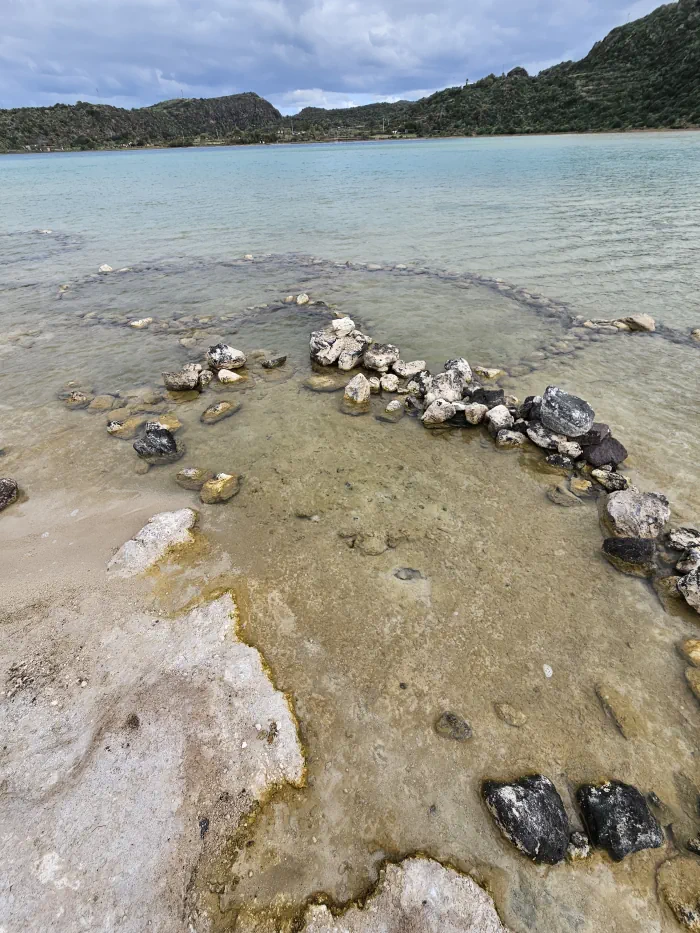
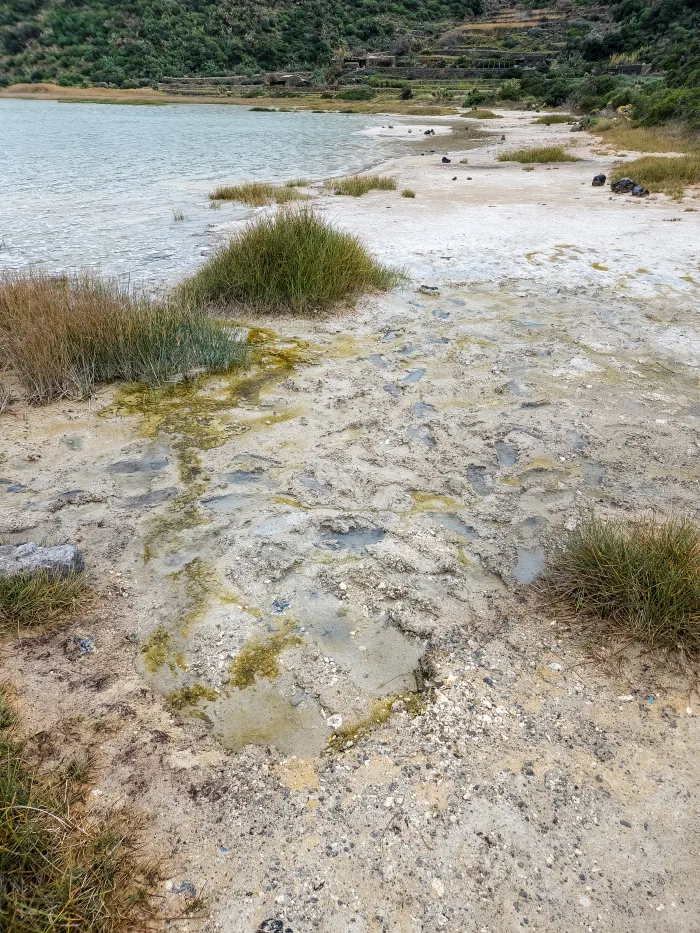
The lake remains rich in minerals (chlorides, sodium, magnesium, lithium, potassium…) whatever the season.
And it is best known for being rich in nutritious natural muds. These are also found on one of the sandy banks of the lake (the western bank).
In two places you’ll find a high concentration of footprints, accompanied by a slight smell of rotten eggs (presence of sulphur in the form of gas). It’s also the only place on the island where I find this smell of hydrogen sulphide (rotten egg), which I particularly like. The bathers collect sulphur mud and apply it to their bodies. I imagine that this clay, which has been exposed to air, sun and water for a long time, must be rich in active ingredients.
But you have to be careful to rinse your skin before it dries, because this bad habit can actually be harmful and irritate the skin. What’s more, these sulfur muds are not inexhaustible.
Reference
Walter D’alessandro, Gaetano Dongarraà, Sergio Gurrierp, Franco Parello, Mariano Valenza Janvier 1994 Geochemical characterization of naturally occurring fluids on the island of Pantelleria (Italy)


